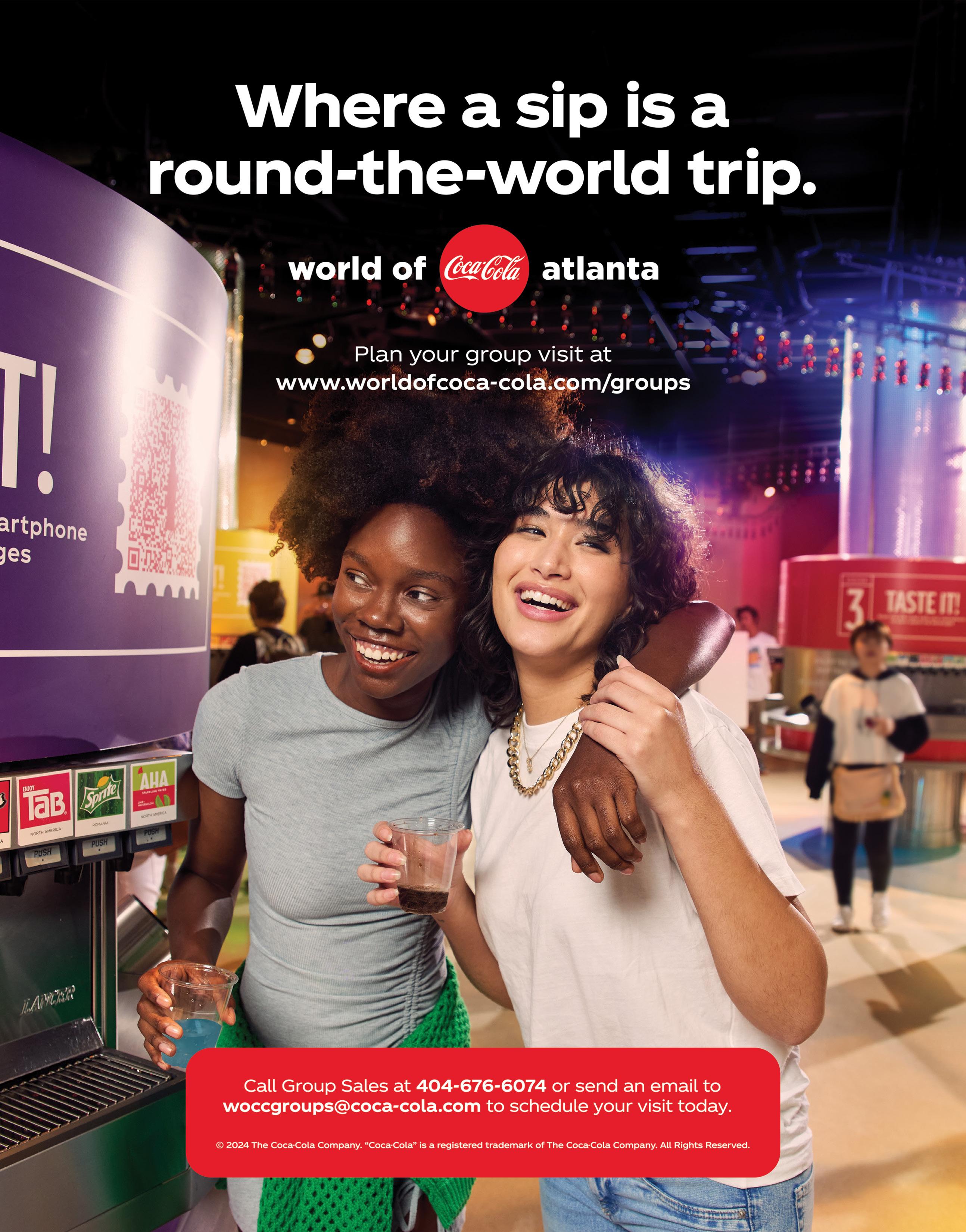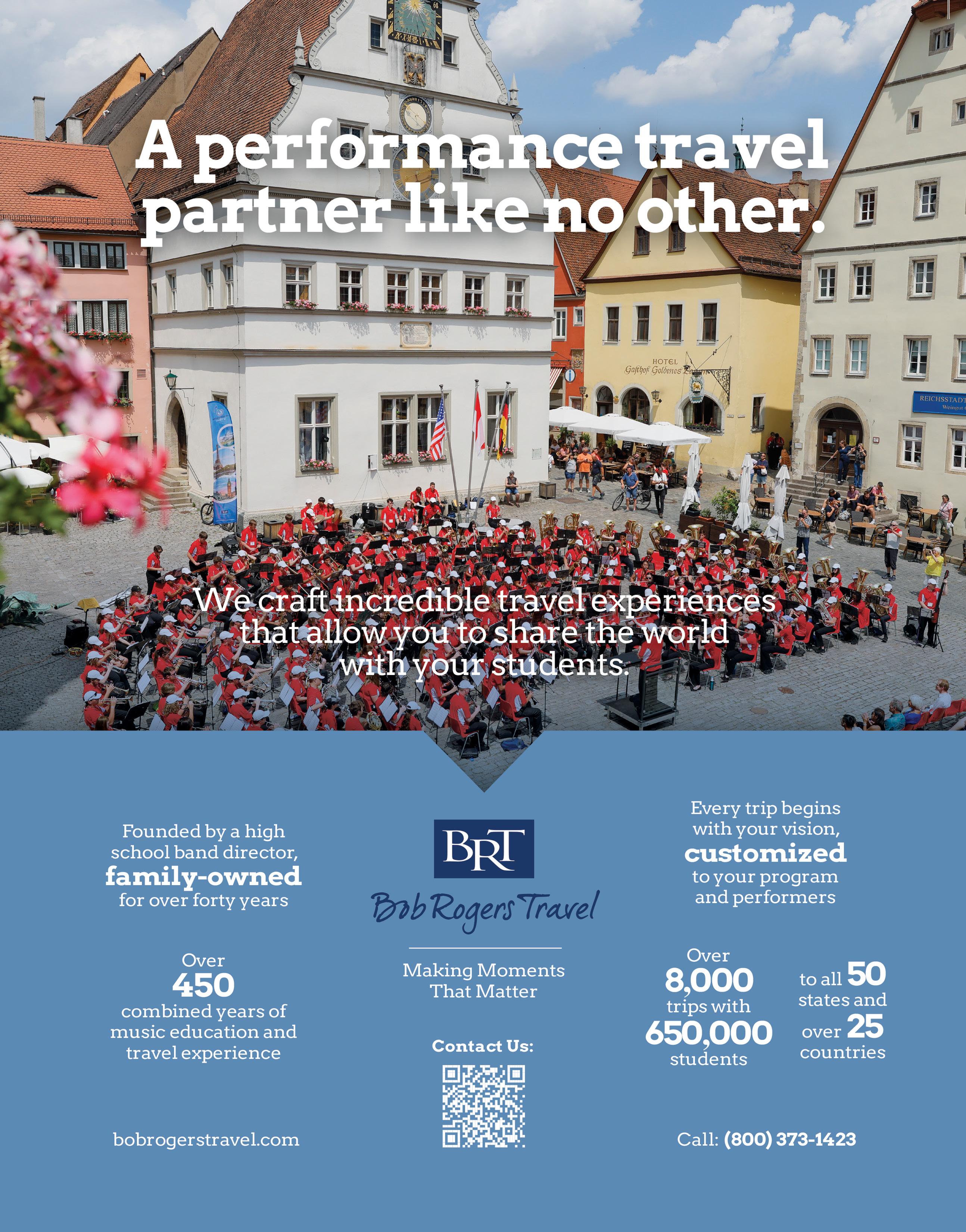SOURCE


SOURCE

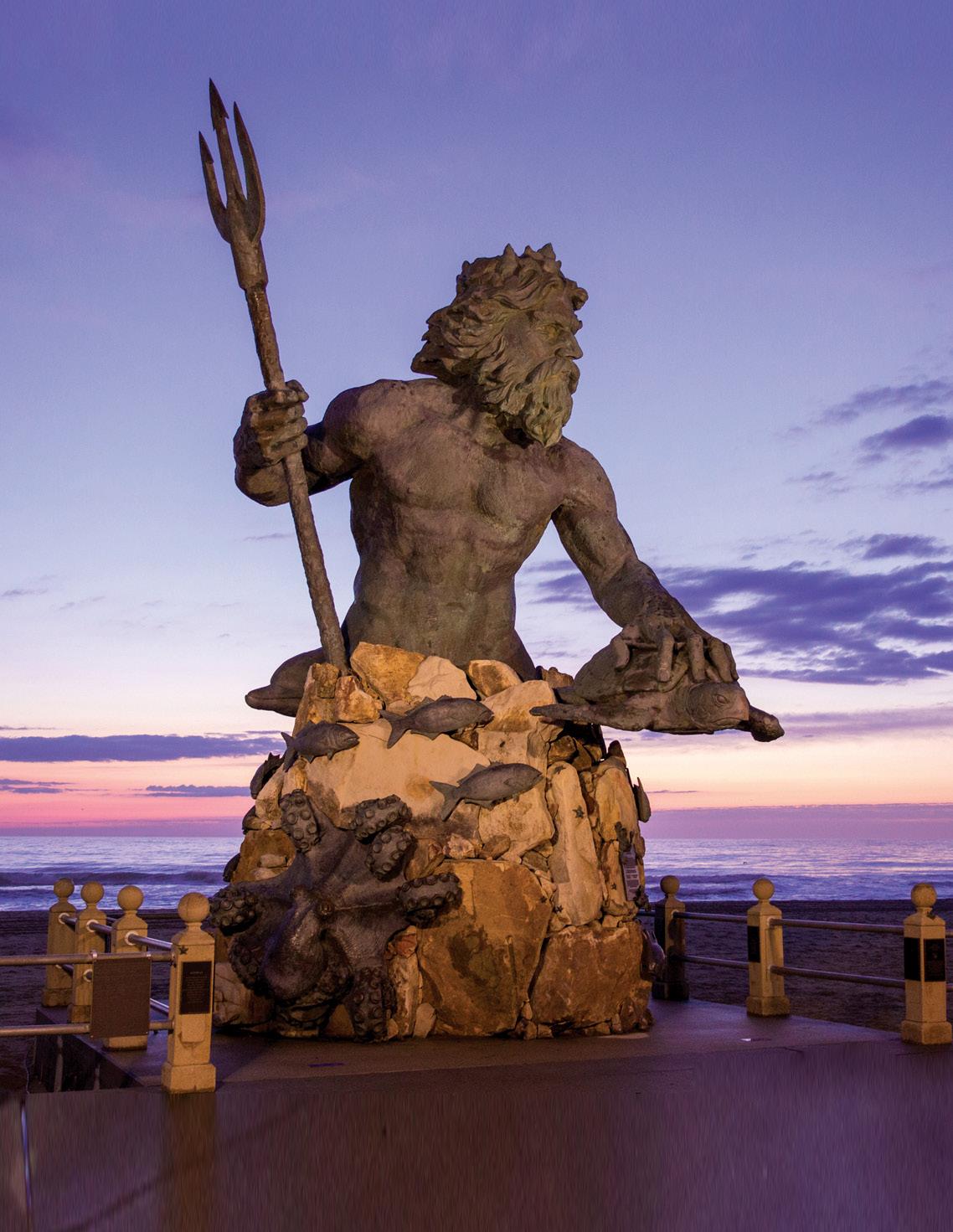
THE PRICE OF POPULARITY: RECKONING WITH OVERTOURISM A CULTURAL AND NATURAL HAVEN: PUERTO RICO AWAITS
ENVISIONING

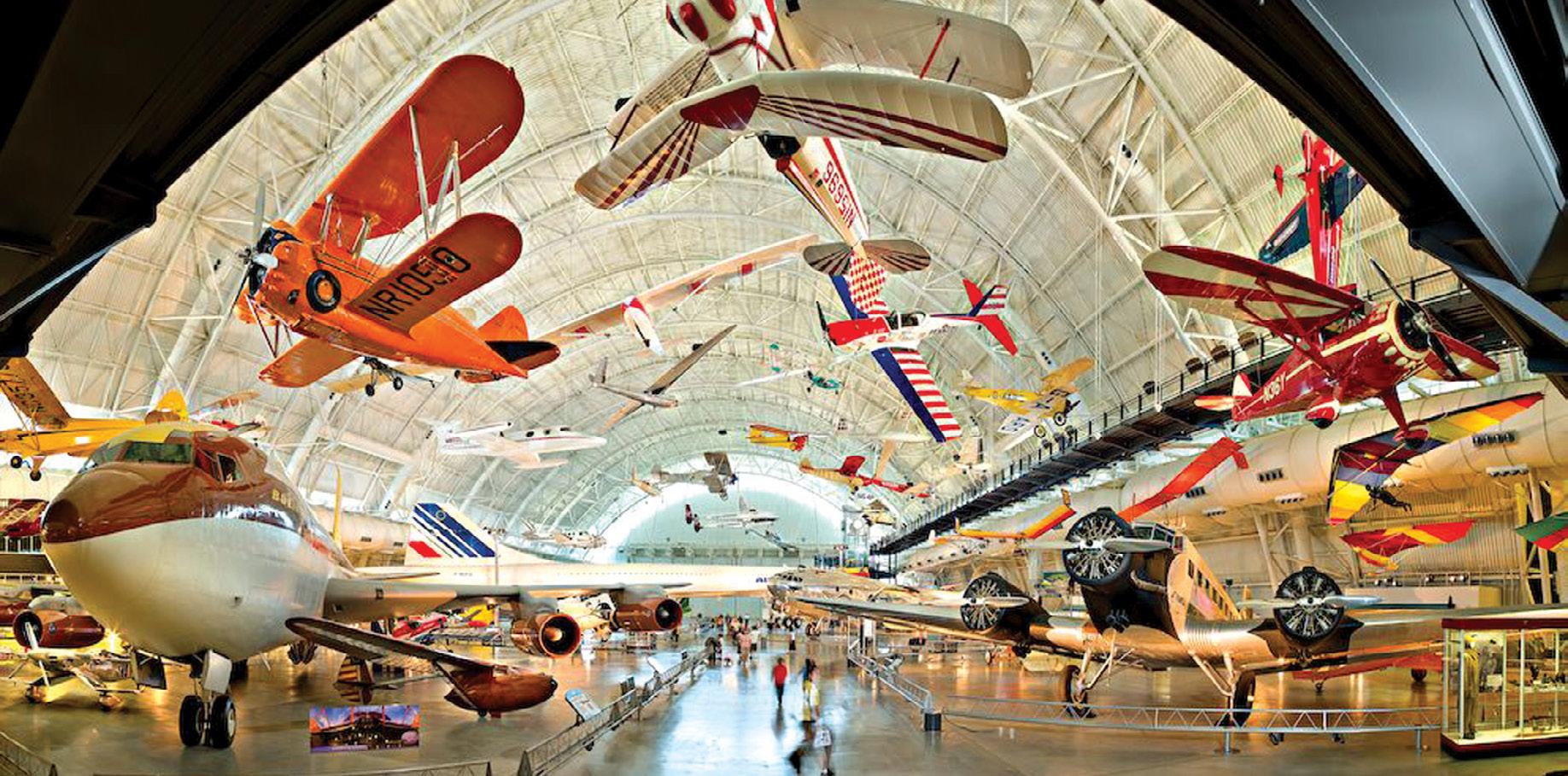
© Virginia Beach Convention
PUBLISHER OF TEACH & TRAVEL SERENDIPITY MEDIA, LLC www.serendipity-media.com | (866) 252-7108
THE TEAM
KASIE SMITH, President & Publisher
COURTNEY VAN HAGEN, Art Director
EMILY ALSPAUGH, Graphic Designer
JOSH VEAL, Editorial Manager
KELSEY SHOEMAKER, Marketing Cordinator
HANNAH HOHMAN, Marketing Cordinator
MEGAN MARSHALL, Accounting & Operations Specialist
MAGGIE MUTCH, Office Coordinator
YOUR MEDIA CONSULTANTS (866) 252-7108
KARY MOENING, kary@serendipity-media.com | x109
HALEIGH GERWIG, haleigh@serendipity-media.com | x117
MEMBERS OF:
AMERICAN BUS ASSOCIATION
CIRCLE MICHIGAN
NATIONAL TRAVEL ASSOCIATION
ONTARIO MOTOR COACH ASSOCIATION
STUDENT & YOUTH TRAVEL ASSOCIATION
SUBSCRIPTION INFORMATION
Teach & Travel – The Official Publication of SYTA may be obtained by filling out the subscription card or calling 866-252-7108. Subscribe online at https:// syta.org/enews-subscribe/. Teach & Travel – The Official Publication of SYTA is published bimonthly by Serendipity Media, LLC; 535 Cascade West Parkway SE; Grand Rapids, MI 49546. Subscription information may be obtained through the above address, by calling 866-252-7108, or by logging on to www.syta.org.
POSTMASTER: Send address changes to Teach & Travel c/o Serendipity Media, LLC; 535 Cascade West Parkway SE; Grand Rapids, MI 49546.
All rights reserved. Teach & Travel - The Official Publication of SYTA content may not be photocopied or reproduced or redistributed without the consent of the publisher.
© 2024 Serendipity Media, LLC
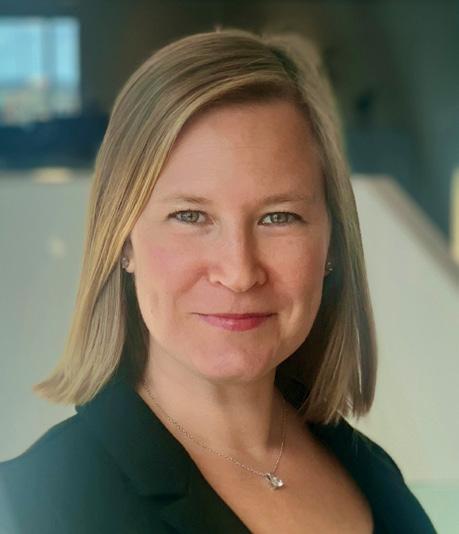
Betts
President, Student and Youth Travel Association
Director of Operations, North America, EF Explore America
hHello everyone, and welcome back!
My name is Courtenay Betts, and I’m the new SYTA president. What began as a summer job leading students on tours throughout North America, became a fulfilling career in travel-based learning. As a Canadian living and working in the USA, I experience destinations from different perspectives and find new ways to bring them to life for the next generation of travelers. When I first started engaging with SYTA, I never imagined that one day I would be given the opportunity to be its President, but I am honored to lead this organization through this next year.
In this first issue of the schoolyear, we’re excited to dive back into student travel. This month, we’re taking a look at Virginia as our U.S. destination, exploring the many ways this state puts American history on display, going back to the days of just 13 colonies—not to mention the gorgeous nature of the Blue Ridge mountains and Atlantic coast. Then we head south to lovely, vibrant Puerto Rico for the North American destination, and then to lush, ecologically diverse Costa Rica for our international trip.
Most exciting for this issue, perhaps, is our announcement of the first ever Traveling Teacher of the Year. We realized there are so many incredible educators who go above and beyond to make travel possible for their students, no matter the barriers, they deserve to be celebrated in a big way. After receiving a slew of excellent nominations, we narrowed it down to 13 finalists, and then passed it on to voters to decide.
Ultimately, our first recipient of the Traveling Teacher of the Year is Stacie Freeman, a professor of sociology at Bethel University and Greenfield High School in McKenzie, Tennessee. Ms. Freeman has over 18 years of experience in secondary and higher education, having traveled with over 600 students to 10 different countries. She’s also a cofounder of the nonprofit Global Citizen Adventure Corps, a public charity dedicated to helping fund and plan service-based travel opportunities for young people from under-represented backgrounds. Check out our interview with her to learn more!
Of course, this issue also has tips and resources for educators, from discussing food and drink safety to examining “overtourism” and how we can be mindful about the impact travel has. Not to mention the winning piece from this year’s World Is A Classroom student essay contest!
With student travel back in a big way (as evidenced by the recently released 2023 Student Travel Business Barometer), it’s an exciting time for everyone involved.
We are off to a great start and I can’t wait to see all the adventures that you will embark on this year!
STRATEGIC PARTNERS








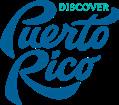












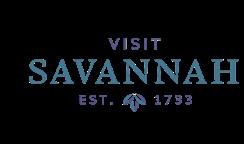


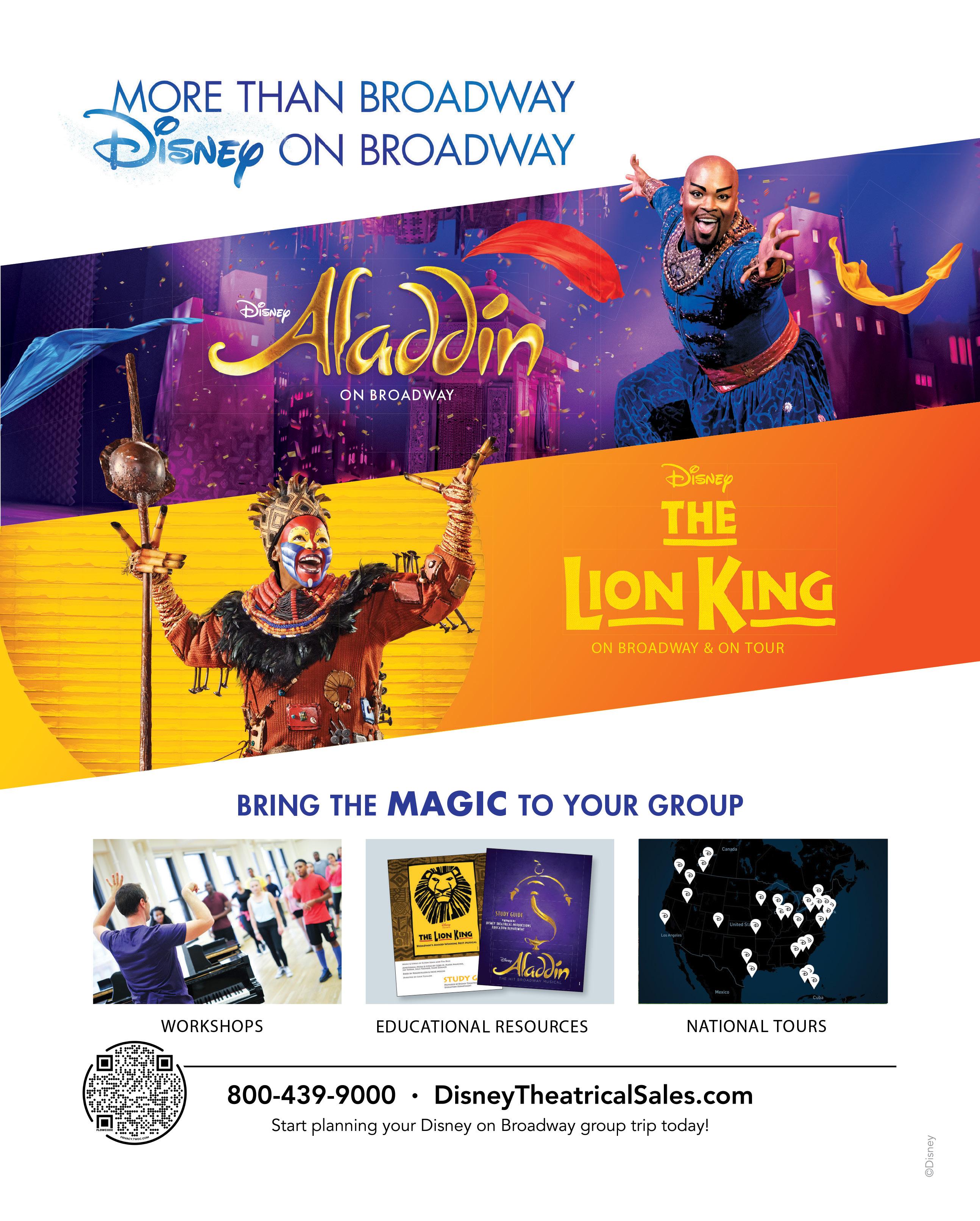
The SYTA Youth Foundation (SYF) established the Road Scholarship program in 2002 to award funds to youth who are unable to afford the cost of student group trips. Based on the belief that travel is essential for a complete education, it is SYF’s goal to make a positive difference, through travel, in the young lives of our global citizens. Since its inception, SYF has impacted more than 7,200 students. A Road Scholarship is financial aid granted to individuals or groups of five or more who have been nominated by a teacher or youth group leader and who meet criteria within five categories: Achievement, Need, Initiative/Involvement, Service/Citizenship, and Connection. The grants are vetted and approved through the SYF Board of Trustees.
TRIPS MARCH 2025 – AUGUST 2025
Application Opens September 15, 2024
Application Closes November 8, 2024
Announced the week of December 9, 2024
TRIPS AUGUST 2025 – FEBRUARY 2026
Application Opens January 27, 2025
Application Closes March 28, 2025
Announced the week of April 23, 2025
WHO CAN APPLY? Students in grades K-12, and younger than 18 years of age will be considered. Nominations must be submitted by an educator, program leader or designated school official. Nominations submitted by parents or guardians will not be considered.
HOW MUCH IS AWARDED? Up to $1,000 USD will be awarded to an individual and a maximum of $5,000 USD will be awarded to a group nomination. Nominations requesting an award higher than the maximum will not be considered. FOR MORE INFORMATION, PLEASE VISIT: https://sytayouthfoundation.org/road-scholarship Questions, email info@sytayouthfoundation.org



Come see what’s new at World of Coca-Cola! Always a hit with student groups, World of Coca-Cola invites guests to learn the story behind the iconic beverage brand through various immersive exhibits, including two new experiences: Beverage Lab and Scent Discovery.
In the Beverage Lab experience, guests can look inside the beverage process, sample famous beverages from Coca-Cola’s vault, and shape the future of beverage development by tasting unreleased formulas and providing feedback that could help develop the next big hit! In the Scent Discovery experience, guests can learn about scent categories, uncover new beverage favorites based on their scent profiles, and participate in a competitive guessing game to learn how scent connects to memories and transports us to special places!
The Teacher Toolkit includes pre-and post-visit lesson plans for grades 8-12 and is included with field trip reservations. Visit worldofcoca-cola.com for the Teacher Toolkit and full details on educational offerings. Minimum guest counts required for group pricing. Call Group Sales at 404-676-6074 or email wschools@coca-cola.com to schedule your visit today!
Celebrating over 60 years as an owner-operated business, Group Sales Box Office at Broadway.com is the original one-stop shop for your groups’ Broadway needs and the #1 trusted source for tickets and reliable customer service. Whether your group is looking to see a long-running hit like Chicago or Wicked or are eager to see one of many new musicals such as Water for Elephants or The Great Gatsby, it’s never been easier to bring
your groups to see a Broadway show! More than 12 million theatergoers attended a Broadway show during the 2023-2024 season, and with 31 new shows already announced for 20242025, the upcoming season looks even more exciting.
With everything Broadway has to offer, Group Sales Box Office knows buying tickets can seem overwhelming at first. They help you select the best show for your group—whether online or on the
phone, making it easy for you and your group to have a fantastic Broadway experience! To reserve your tickets simply visit groups. broadway.com or make a call to 1-800-BROADWAY x2.
The Empire State Building Observatory Experience features an interactive museum with nine galleries and offers unmatched views from its world-famous 86th and 102nd Floor Observatories. The Observatory Experience was voted the #1 attraction in the world—and the #1 attraction in the U.S. for the third consecutive year—in Tripadvisor’s 2024 Travelers’ Choice Awards: Best of the Best Things to Do. The reimagined Observatory Experience recently updated its complimentary interactive lesson plans for student group visits to the building, in partnership with Bank Street College of Education. The curriculum follows New York State Learning Standards for STEAM (science, technology, engineering, arts, and mathematics) and social studies and features grade-appropriate learning plans for elementary, middle, and high school students. From self-guided group visits to private tours, the Empire State Building Sales team provides tailored experiences for groups of all sizes at esbnyc.com.
Learn About the Entertainment Industry. Branson stands as the Number One Best Student Performance Destination globally, offering unrivaled opportunities for groups of all sizes. With over 100 live shows, state-ofthe-art theaters, and a variety of performance venues, Branson

caters to groups of all sizes, from small ensembles to full marching bands, we have the perfect venue to showcase your student’s talent. Student groups can perform in front of friendly live audiences who love live music, creating unique and unforgettable experiences. The stages are set against the glow of iconic Highway 76, with enthusiastic community support ensuring every performance feels special. Our award-winning theme parks and exciting attractions provide exceptional performance settings, allowing students to showcase their talents at a highly professional level.
Off the stage, the rich history of the Ancient Ozarks is reflected in Branson’s rolling hills, beautiful lakes, and renowned caves.
Known as the cave state, Missouri offers students a glimpse into geological wonders. Our robust conservation efforts preserve this natural beauty, enhancing educational experiences for both lakes and land. From galleries showcasing the America West and civil war to astounding collections of Native American artifacts, to actual pieces from the Titanic shipwrecks, Branson’s diverse attractions, museums, and historical landmarks expand educational horizons beyond the classroom. Learn more at explorebranson.com.
Bringing student groups to Shores & Islands Ohio offers an enriching blend of educational opportunities amidst picturesque landscapes. Nestled along Lake Erie, the region captivates with its historical sites like Perry’s Victory and International Peace Memorial, fostering lessons in
American history and diplomacy. The Marblehead Lighthouse adds a beacon of learning about maritime heritage and Great Lakes navigation.
Students can delve into ecological studies through visits to the Lake Erie Islands Nature and Wildlife Center, and the soon to be all-new Aquatic Visitors Center, both on South Bass Island, where students can explore diverse ecosystems and conservation efforts firsthand. Educational tours of local vineyards and orchards showcase agricultural practices, while
activities like kayaking and fishing promote environmental stewardship and outdoor skills.
Let Shores & Islands Ohio become your classroom, blending natural beauty with rich educational experiences, inspiring students to connect with history, ecology, and community in meaningful ways. To help build your custom itinerary today reach out to Joey Sugalski, Joe@Shoresandislands. com or visit shoresandislands.com/ groups/.

At Colonial Williamsburg, archaeologists, historians, and other experts actively uncover the past to better inform the future. The Williamsburg Bray School, the oldest existing structure dedicated to the education of enslaved and free Black children, was discovered in late 2020 through dendrochronology— the practice of dating buildings via tree rings. In early 2023, the structure was relocated to the heart of our Historic Area. Students can experience the site this fall as the restored building opens to the public.
Renovations are also underway at the Magazine, where new evidence emerged about the perimeter wall’s height, restoring the building to a more accurate 18thcentury appearance. This work continues as we approach the 250th anniversary of the Gunpowder Incident, a crucial event on America’s path to independence. Plus, uncover your students’ love for history by meeting our Nation Builders, such as James Armistead Lafayette, the double agent whose courage helped secure victory at Yorktown. With every step they take in these historical journeys, students will expand their knowledge of our country’s rich story at Colonial Williamsburg. Plan your trip at colonialwilliamsburg.org.
In addition to Top of the Rock’s new openings of The Beam Experience and The Weather Room Café, there are additional exciting experiences coming to Rockefeller Center this year. Opening this summer, an entire new experience awaits you with our completely reimagined Mezzanine Exhibit at Top of the Rock. Immerse yourself in the captivating story of Rockefeller Center through stunning murals, a mesmerizing projection-mapped model, and an unforgettable theater show.
The last piece of Rockefeller Center’s exciting redevelopment will be arriving later this year. Be raised an additional 30feet above the observation deck and experience a mesmerizing panorama from Skylift, NYC’s only completely unobstructed 360-degree viewpoint. At Rockefeller Center, the sky is not the limit, but only the beginning of an unparalleled adventure. Head to rockefellercenter.com for more info.

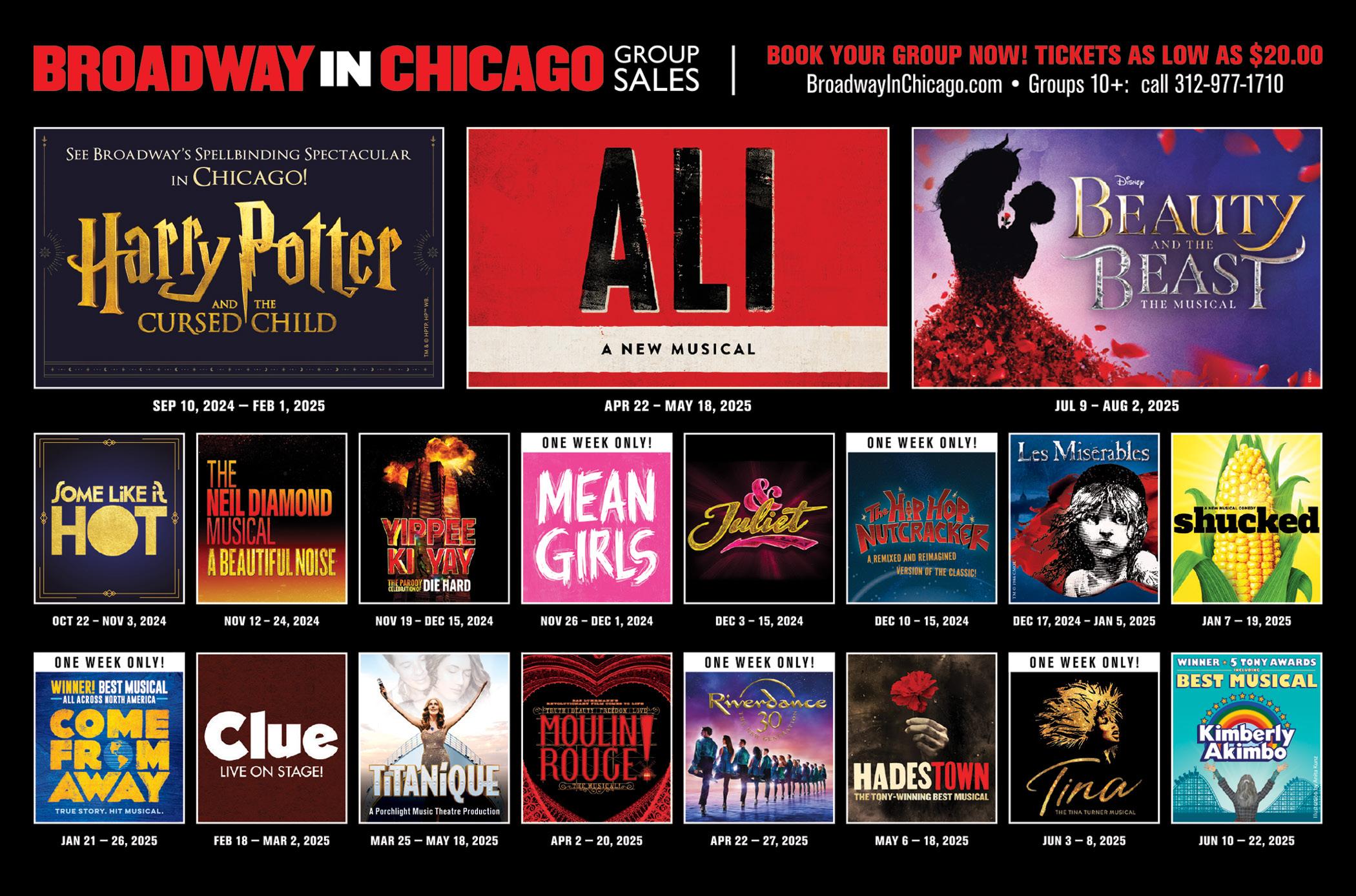



BY JOSH VEAL
sSYTA has released the 5th annual edition of the Student Travel Business Barometer, the only annual quantitative data resource of its kind for domestic and international student group travel includes trend data for previous years and provides forecast data on the coming year.
The Business Barometer was established by SYTA and BONARD in 2019, and it provides an analysis of trends and industry growth from 2019 through 2023. It has established sector-specific and globally recognized consistent reporting, delivering trend data and insight into key developments shaping the industry.
Here is a summary of key findings and overall outlook for the near future, based on the data gathered from a stable sample of 140 tour operators and travel and education agencies from 22 countries worldwide.

In-country travel surpassed 2019 numbers in 2023 (by 22%) and is estimated to remain at this level in 2024. Over 1.13 million students took in-country trips in 2023, exceeding 2022 levels by 125%.
A greater proportion of students also adhered to their planned travel in 2023 (83%) compared to 2022, when only 65% of students kept their plans. There were fewer postponed trips in 2023 as well, only 2% compared to 10% in 2022. In addition, the average group size increased from 52 students in 2022 to 62 students in 2023.
Meanwhile, for global out-of-country travel, we saw an increase of 240% in 2023 over the year prior— 273,000 students versus 80,000—as the opportunity to travel abroad increased, and students and teachers acted on pent-up demand. This trend is forecasted to continue in 2024. This is a stark contrast to the pandemic years when only 30,000 students traveled in 2020 and 27,000 students traveled in 2021.
Educational-themed tours attracted 39% of the student base for in-country travel, leading the tour categories compared to the performance group tours that traditionally led. The performance category was heavily impacted by the cut back of in-person learning and performance opportunities during the pandemic, and has been recovering at a slower pace. In 2023, these trips garnered a 33% market share. However, this number is expected to increase in 2024 and beyond as more students return to music programs.
Tour operators are offering more specialized educational travel programs as well, touching on more cultural, ethnic and community-based interests, reflecting changing preferences by both educators and their students who are increasingly sensitive to sustainability and DEIA concerns.
There also has been increasing interest in sustainable, culturally immersive travel options and outdoor, natural experiences, shifting from “volunteer” or service opportunities to sustainable travel. Student tour operators anticipate more in-country travelers taking multi-day interstate trips in 2024. Additionally, overnight trips are expected to also rise in popularity among student groups. Survey tour operators expect both trip types to increase in demand by 17%.



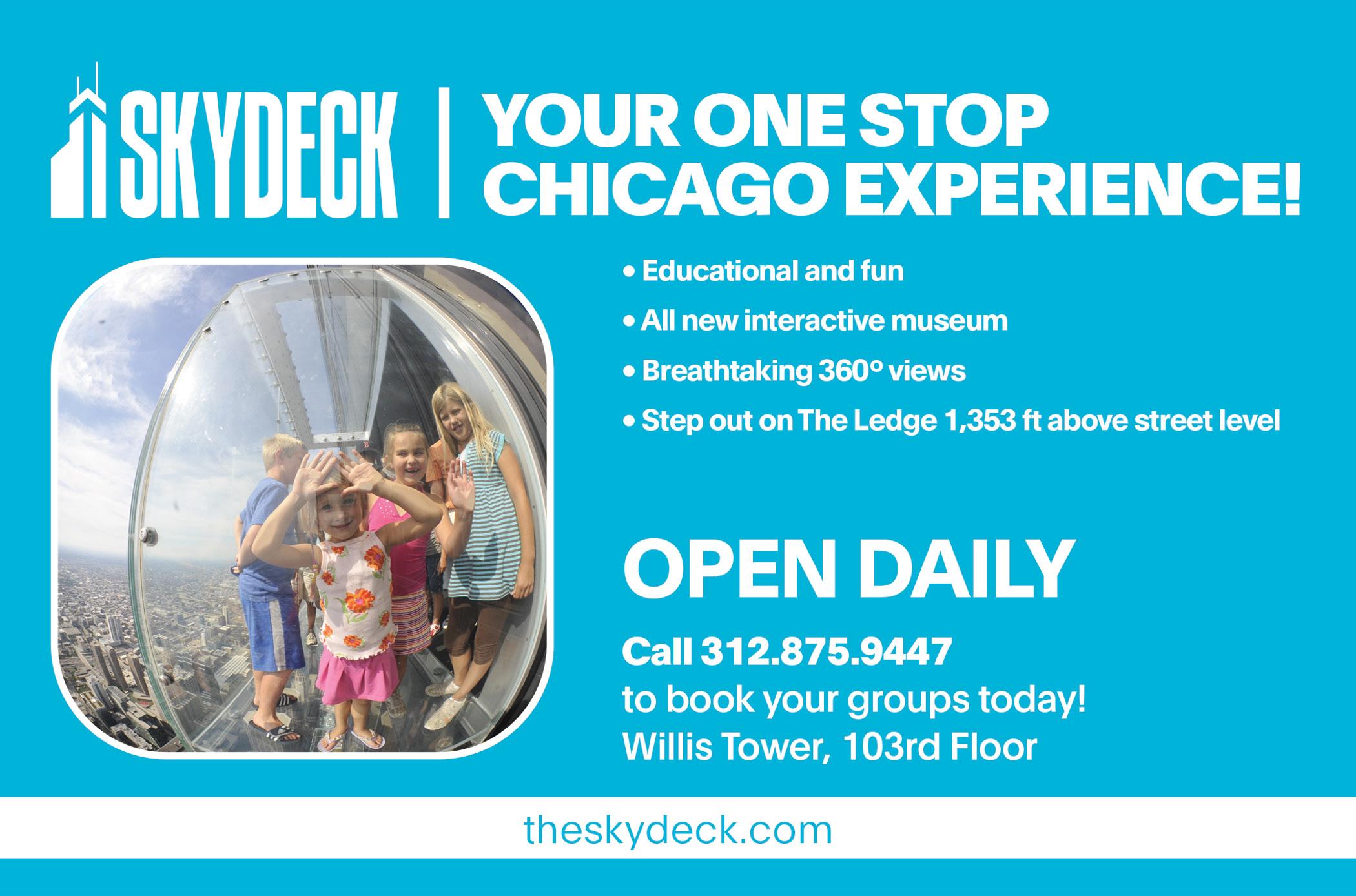
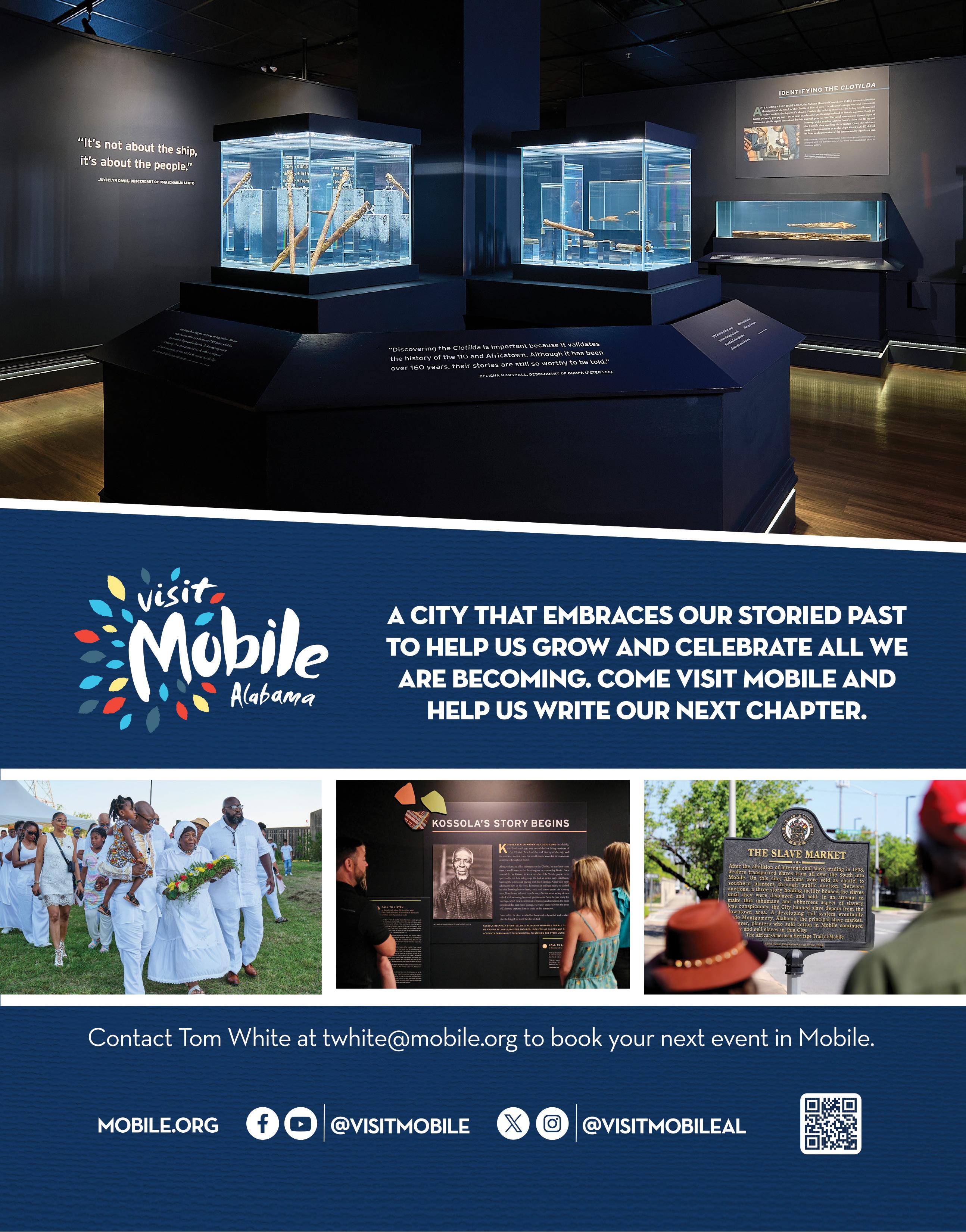

BY JOSH VEAL
eEducators who are passionate about travel go far above and beyond what’s asked of them, expanding their students’ horizons in lifealtering ways. That’s why, this year, we launched the Traveling Teacher of the Year Award.
After receiving dozens of excellent nominations, the Teach & Travel team narrowed it down to 13 top finalists, and then let the public vote. Now, we’re excited and honored to announce the first-ever Traveling Teacher of the Year: Stacie Freeman.
Stacie Freeman is a professor of sociology at Bethel University and Greenfield High School in McKenzie, Tennessee, with over 18 years of experience in secondary and higher education, having traveled with more than 600 students to 10 different countries. Her nominator said that together, they have volunteered

over 37,000 hours with an economic impact of over $1.1 million in the communities they serve.
In addition to her work with her own students, Freeman and her colleague Dr. Julie Hill cofounded a public charity in 2022, Global Citizen Adventure Corps, in order to better facilitate service-based travel opportunities for young people from under-represented backgrounds who might not have that opportunity otherwise.
How did you get started as a teacher?
Freeman is incredibly passionate about her work, doing everything she can to make travel happen for students. She’s also excellent at articulating that passion, which is why we recommend reading her Nomination Q&A at teachtravel.org, where we’ll also be publishing an extended interview with Freeman. We asked Freeman to talk about how she became a traveling teacher, why she works with high school students, and how she founded GCAC.
When I was a kid, just a little bitty, I would pretend to be a teacher at my grandmother’s house, and she had this beautiful collection of National Geographic magazines. I would use these magazines as my textbook for my “classroom.” It’s not like I’m gleaning a lot from these articles at that age, but the pictures and the places and the things that I was seeing in those magazines, I was really intrigued by and interested in. And so, I developed a fascination with travel and culture and history and architecture and food and all the things.
I went to college, got a bachelor’s in psychology, and then a master’s in social work. I was in graduate school when I was reminded of how much I loved teaching, and almost immediately got an offer to become an adjunct professor at Bethel University here in Northwest Tennessee. It’s just a really small private college of liberal arts.
How did that lead to traveling?
After about a year or two, I was missing being out in the field, helping others, serving, and so I banded together with a group of students, and we started a community engagement program at Bethel, and it started out just as a student-led organization, where we were going out to the Humane Society and walking dogs, and working with the Habitat for Humanity to build houses. We were collecting coats and things for the local shelters and just really local things.
That changed when Hurricane Katrina hit New Orleans. After that, we made our first trip out of the state on a service program, and it was to New Orleans, and that was such an impactful experience for my students, and for me to see my students having that impactful experience helping others. We just took off. We went to Washington, DC and partnered with the National Coalition for the Homeless. We were out in Appalachia working on a construction project that became an afterschool program for at risk youth. We went out to Arizona and worked with the Navajo nation, refurbishing a geodesic dome for their afterschool program.
One day, I just decided, “I think I’m going to go ask the president of the university if I can take a group of kids to save turtles in Costa Rica.” And at first they said, “Oh, no, we’ve never done that before. We gotta do some research.” And so, I did. I spent about a year researching and visiting
It’s sort of funny that here I am now, all these years later, and I’M ACTUALLY A NATIONAL GEOGRAPHIC CERTIFIED EDUCATOR WHO STILL USES NATIONAL GEOGRAPHIC MAGAZINE in the classroom.
colleges and universities that were at the same consortium that Bethel University was in at the time, and kind of came back with like, “Well, this is what Vanderbilt’s doing, and this is what Belmont is doing, and this is what Rhodes is doing.” And they finally said, “Well, if you’ll do what they’re doing, then we’ll let you go.” And, boy, it just took off after that. It’s sort of funny that here I am now, all these years later, 50 years old, and I’m actually a National Geographic certified educator who still uses National Geographic magazine in the classroom.
How did you end up working with high school students as well?
I love that story. Bethel University offers a dual enrollment program, like many colleges and universities do, and so, when we started ours back in like 2015 or so, they sent me out to the high schools to teach. I teach Sociology 111 and that was in 2015. I was at my alma mater, of all things, the very high school I graduated from, teaching Sociology 111 in the same classroom where I had physics with my high school basketball coach. The whole experience was surreal.
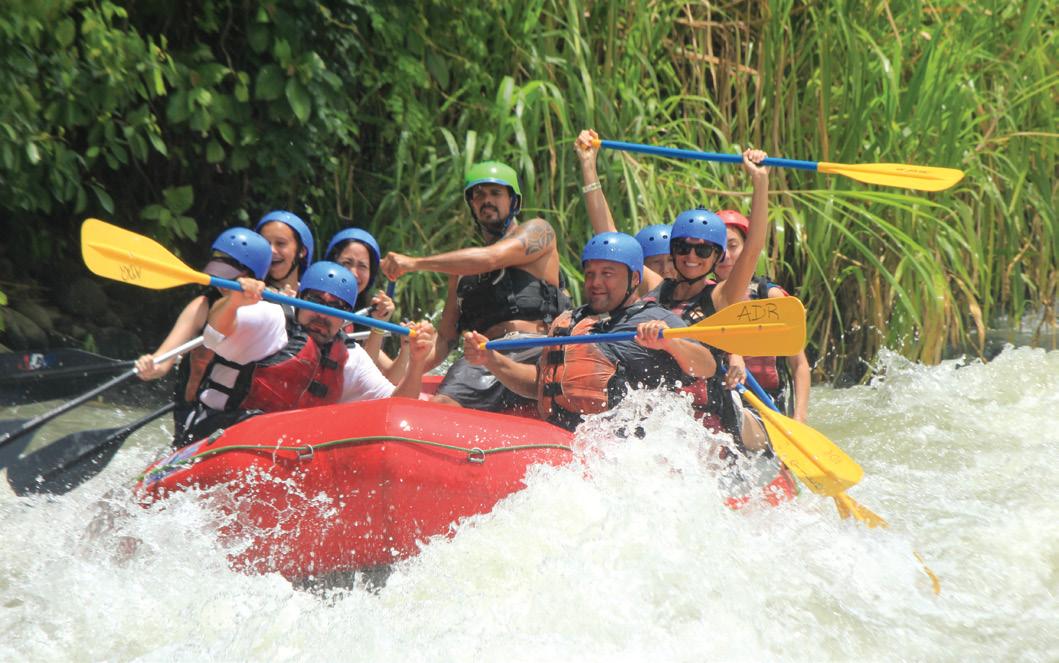
And so I’m introducing myself to the class, I’m like, “Okay, well, y’all don’t know me, but this is my alma mater. I went to school here. I probably know your parents.” I’m talking about the Global Studies program that I direct at Bethel University, and I tell them, we’re gonna go to Cuba this summer. That’s back when the doors of Cuba were sort of creaking open a little bit, and the kids in the classroom were just enthralled.
They were like, “Well, can we go to Cuba?” And I said, “Oh, I doubt it. There’s no way. There’s no way the administration at Bethel University is going to be like, ‘Oh, yeah, that’s a great idea.’” But I went back to the president’s office, and I said, “I got this idea. These kids are wanting to go to Cuba with us this summer. What do you think about letting them go and having them earn college credit through the dual enrollment program?” And he looked at me and he said, “That’s a great idea. I think that would be fantastic.” That’s how it started, and it has exploded since then.
I have taken over 600 kids now on these programs. I just got back, in fact, from Italy, England, France and Switzerland, and all those kids
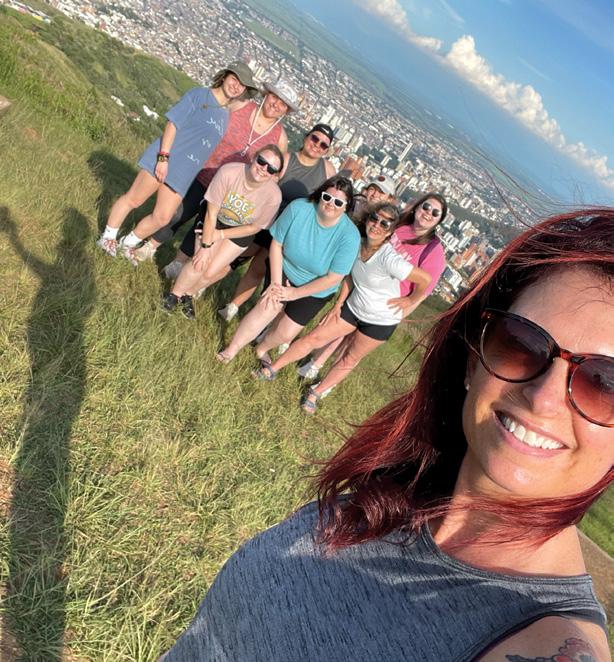

have earned college credit. When they volunteer with us, they earn the President’s Volunteer Service Award. So, they’re walking out of their high schools, and these little, tiny Title One rural Tennessee high school kids have some killer college applications with their international service and their college credit and the President’s Volunteer Service Award. So, Bethel has not regretted it.
Now tell us about how Global Citizen Adventure Corps.
So, I’d go into these high schools and I’d be telling them all about Global Studies, and then I’d be telling them about what was coming up on the calendar, and it had gotten to where they were hearing from kids in previous programs that were getting to go to Costa Rica, Peru, Cuba, all these places, and volunteer and earn college credit. These meetings were packed. I mean, I’d have 40, 50, 60, 70 kids come, get excited, and then go home and ask their parents, and it was just like, “There’s no way.” I mean, we had kept the prices as low as we could, like $2,000, $3,000, trying to make it affordable for our kids. But I might as well have been asking them for $20,000 or $30,000. They just didn’t have it.
And so, for years, I was paying. You know how that goes—teachers, that’s what we do, right? I was discounting, and going to friends of mine. I’d be like, “Hey Joel. We’ve got a kid, they
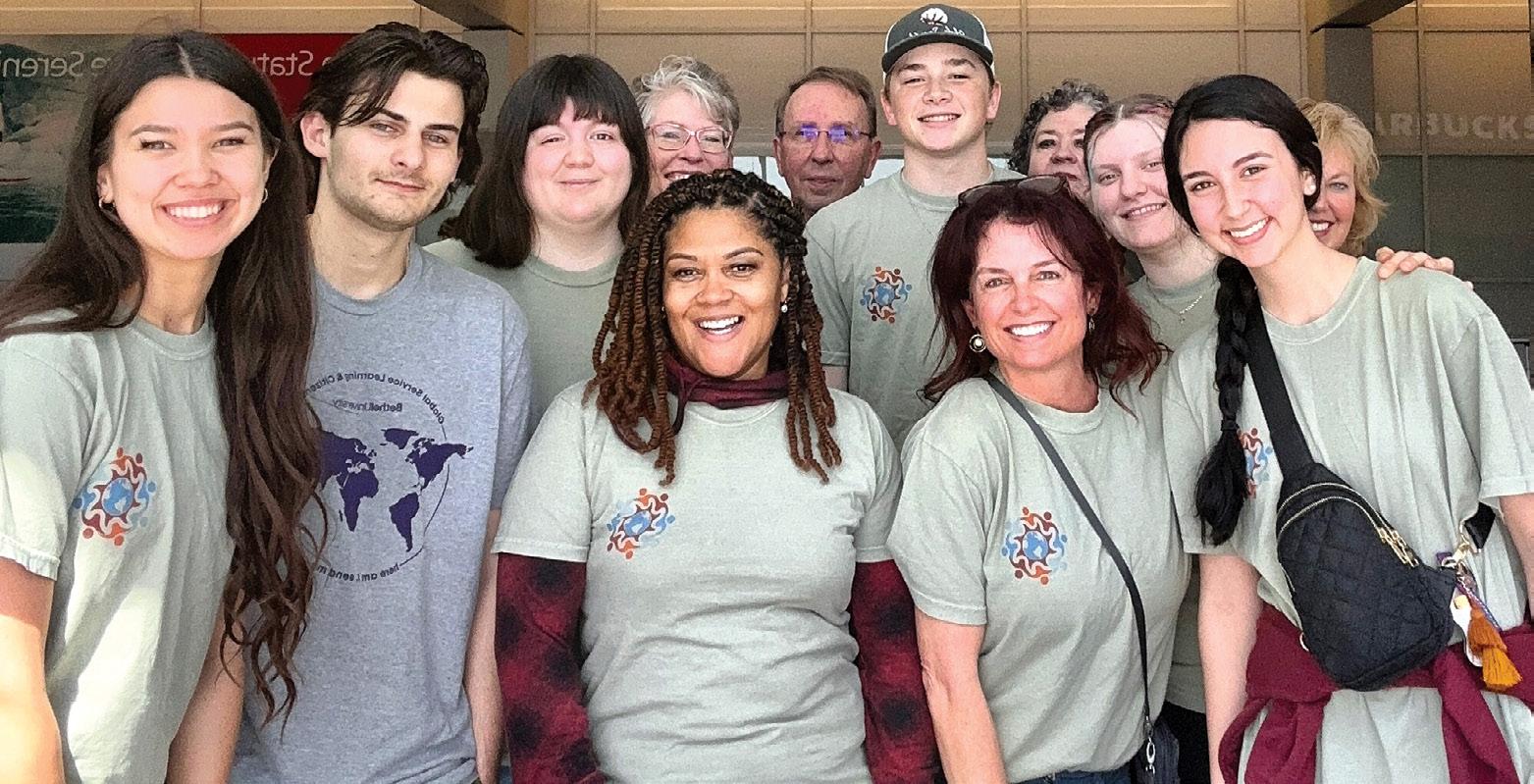
signed up and made the deposit, but now they can’t make the payments.”
And he’d write me a check. I’d be out to dinner with a friend, saying, “Well, I’ve got two or three that are behind.” And she’d say, “Well, how much do they owe?” And I’d tell her, she’d catch them up. So it was a hodgepodge of people working together to make sure that the kids got to go.
But then, a tornado hit the little town that I live in in Tennessee, and I’m telling you, it absolutely demolished the place. We had a trip planned to Costa Rica, and I thought, “I cannot ask a single person in this community to contribute a dime to this program when my own hometown is in dire need.” And so, my first inclination was just to cancel the program and give everybody their money back, be like, “Here, rebuild your houses, rebuild our community, do something else.” But then I thought, “You know what, Covid has just taken two years of high school from these kids. This tornado has
taken jobs and homes. I’m not taking something else from them that I know they’re so excited about.”
What I did instead was, all those people I just told you about that have given me $100 here, $200 there, I called them up. “Hey, it’s time to open the wallet, get the checkbook out. We’ve got work to do. These kids cannot pay for this trip.” And you know what, they did it. These folks came through for me, and several surprises came along from people with more resources, who said, “Hey, if you would start a nonprofit, we could give you more if this were tax deductible.” And so, that was one of many catalysts for starting that nonprofit, just having kids in need with the tornado hitting our hometown, it literally was the perfect storm. And so far, so good. We just won an award from GoAbroad with our innovation and philanthropy, for helping the kids. It’s a really, really terrible thing has turned into something good, at least in a small way.

... together, they have volunteered over 37,000 hours with AN ECONOMIC IMPACT OF OVER $1.1 MILLION IN THE COMMUNITIES THEY SERVE.
Read more about Stacie, and the 12 other amazing educators who were nominated for this award, at teachtravel.org/traveling-teacher-of-the-year.
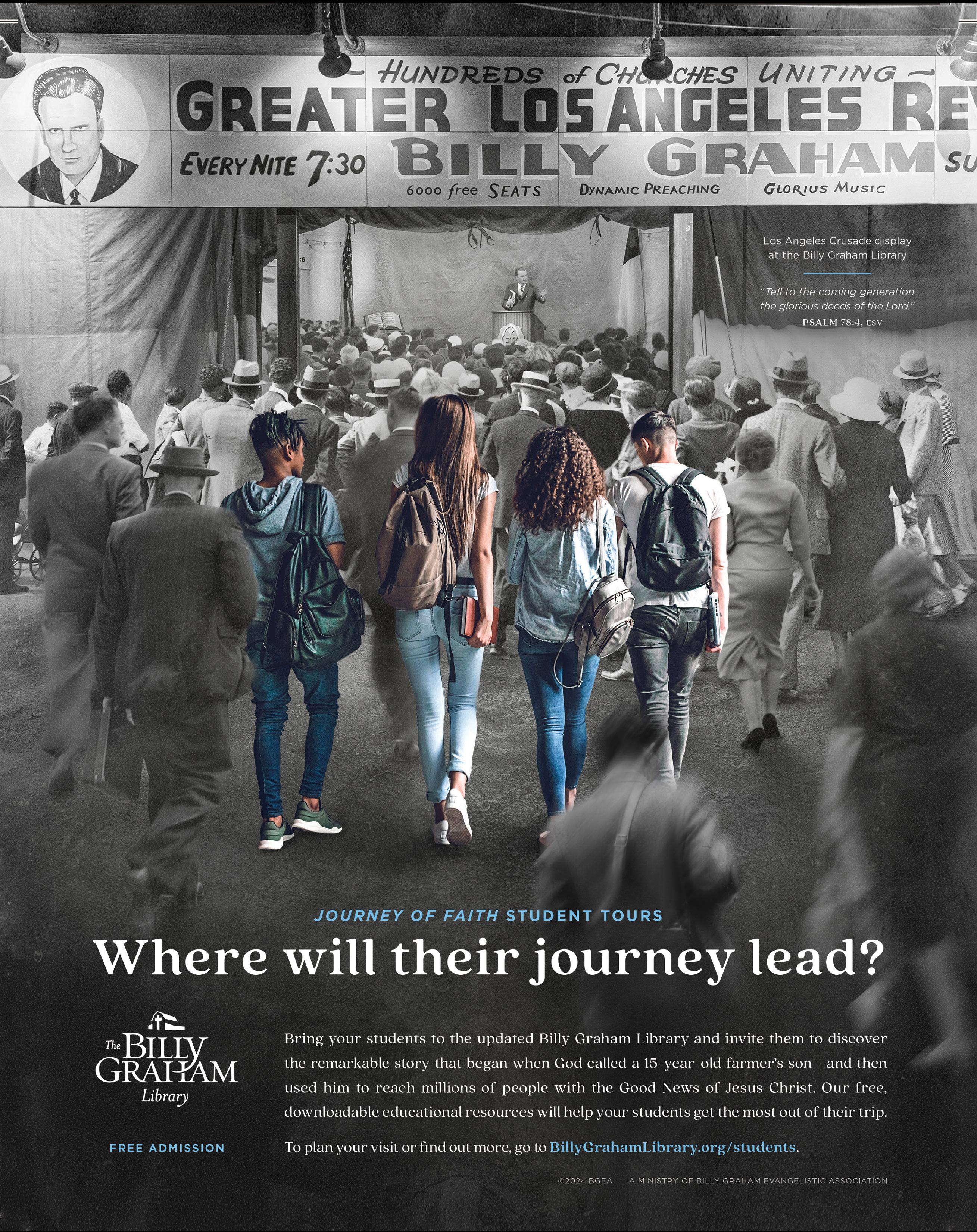

tTraveling far and wide opens the door to new experiences and cultures, but it also presents challenges, especially when it comes to food and drink safety.
Contaminated food or beverages can lead to travelers’ diarrhea and other diseases, potentially disrupting your journey. By adopting cautious eating and drinking habits, you can minimize you and your group’s risk of getting sick.
Here are essential guidelines to help you all stay healthy on your travels.
Hand Hygiene | Always wash your hands with soap and water before eating or preparing food. If these are not available, use an alcohol-based hand sanitizer with at least 60% alcohol.
Temperature Control | Avoid lukewarm food. Cold food should be served cold, and hot food should be served hot. Ensure hot food is steaming and cold food is chilled, especially when selecting from buffets or salad bars.
Dry and Packaged Foods | Foods that are dry, such as potato chips, are usually safe as most germs require a damp environment to grow. Factory-sealed containers, like canned tuna or packaged crackers, are generally safe if they have not been opened or handled by others.
Raw Foods | Avoid raw foods. Fruits and vegetables are safer if you can peel them yourself or wash them in bottled or disinfected water. | Stay away from pre-cut fruits and vegetables, fresh salads, raw salsas, and condiments as they might be contaminated. | Avoid raw meat or seafood, including items “cooked” with citrus juice, vinegar, or other acidic liquids, like ceviche.
Street Food | Be cautious with street food. Follow the same safety rules as with other foods, avoiding raw vegetables and ensuring food is cooked and served hot.
Bushmeat | Do not consume bushmeat (wild game not typically eaten in the U.S., such as bats, monkeys, or rodents) as it can spread diseases like Ebola.
BY JOSH VEAL
Tap Water | Avoid drinking tap water in countries where it might be contaminated. Use bottled or disinfected water for drinking, brushing teeth, and avoid swallowing water when showering.
Ice | Do not use ice if you are in places with limited access to clean water, as it is likely made from tap water.
Bottled or Canned Drinks | Choose unopened, factory-sealed bottled or canned drinks. Be cautious as vendors may sometimes replace bottled water with untreated water. Carbonated drinks are typically safer because their bubbles indicate they were sealed at the factory.
Hot Drinks | Hot coffee or tea should be served steaming hot to ensure safety. Let it cool before drinking but avoid adding potentially contaminated items like cream or lemon.
Milk | Only drink pasteurized milk from sealed bottles. Avoid milk stored in open containers, such as pitchers, which may have been at room temperature.
Boiling | Boil water for at least one minute to ensure it is safe to drink.
Chemical Disinfectants | Use chlorine or iodine drops, tablets, or powders to disinfect water. These should be purchased from reliable sources. Follow the manufacturer’s instructions carefully.
Portable Filtration Devices | Use filters with a pore size of less than 0.5 microns. For added safety, combine filtration with boiling or chemical disinfection.
Ultraviolet (UV) Light | UV light devices can effectively disinfect small quantities of clear water. They are less effective with cloudy water due to particle shielding.
Bottled Water | Ensure bottled water is from a trusted source and that the seal has not been tampered with before drinking.
By following these food and drink safety tips, you can significantly reduce the risk of illness and enjoy a healthier, worry-free travel experience.

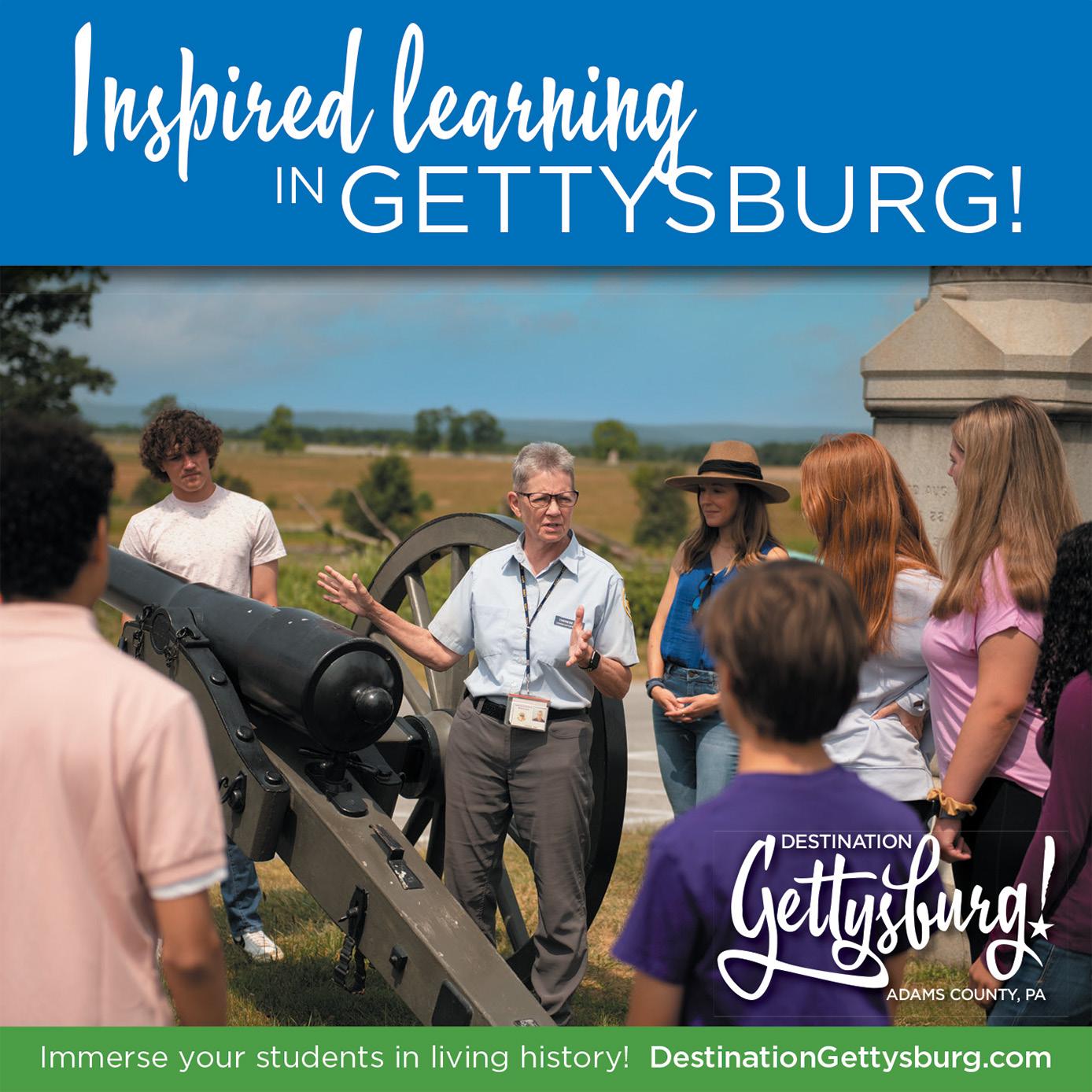
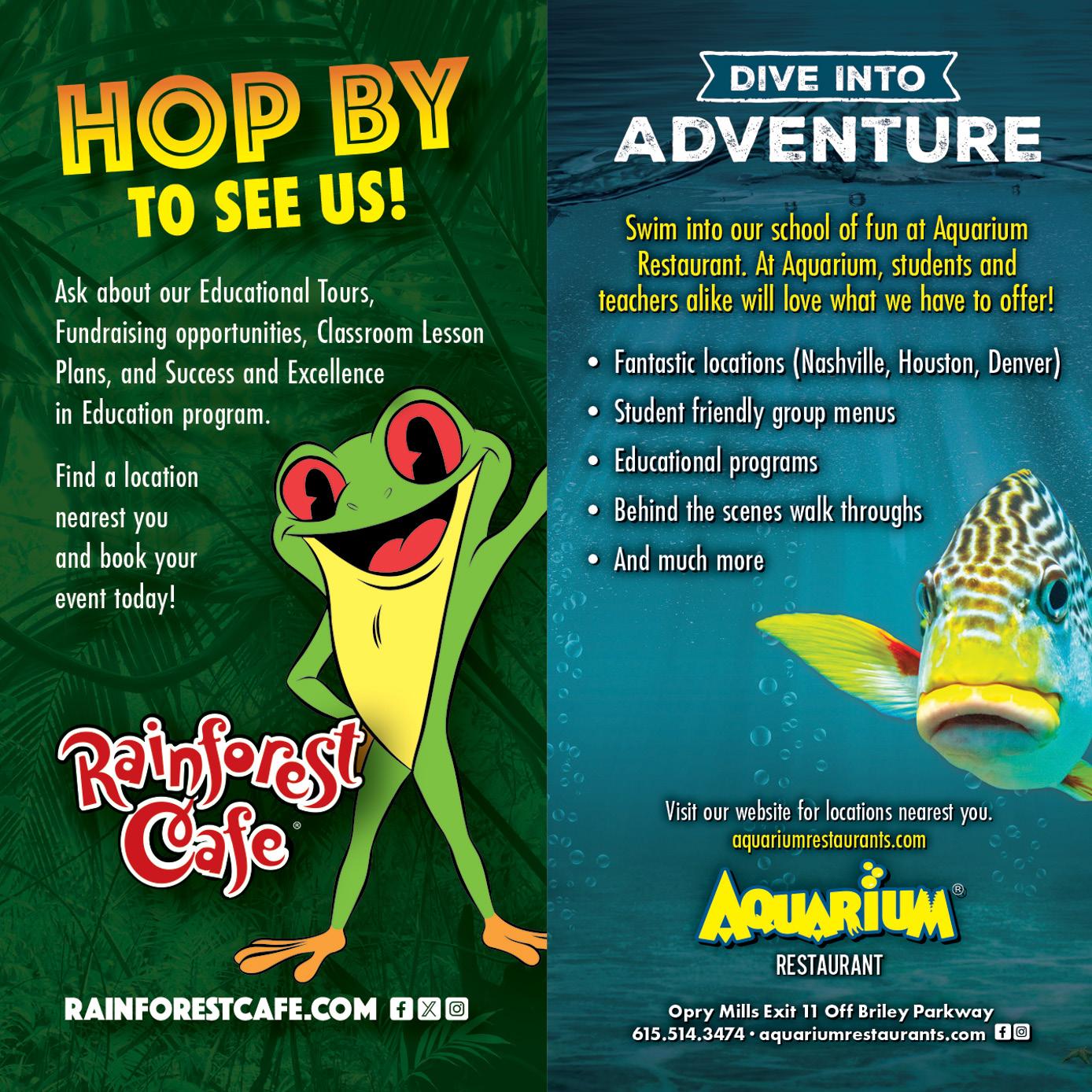



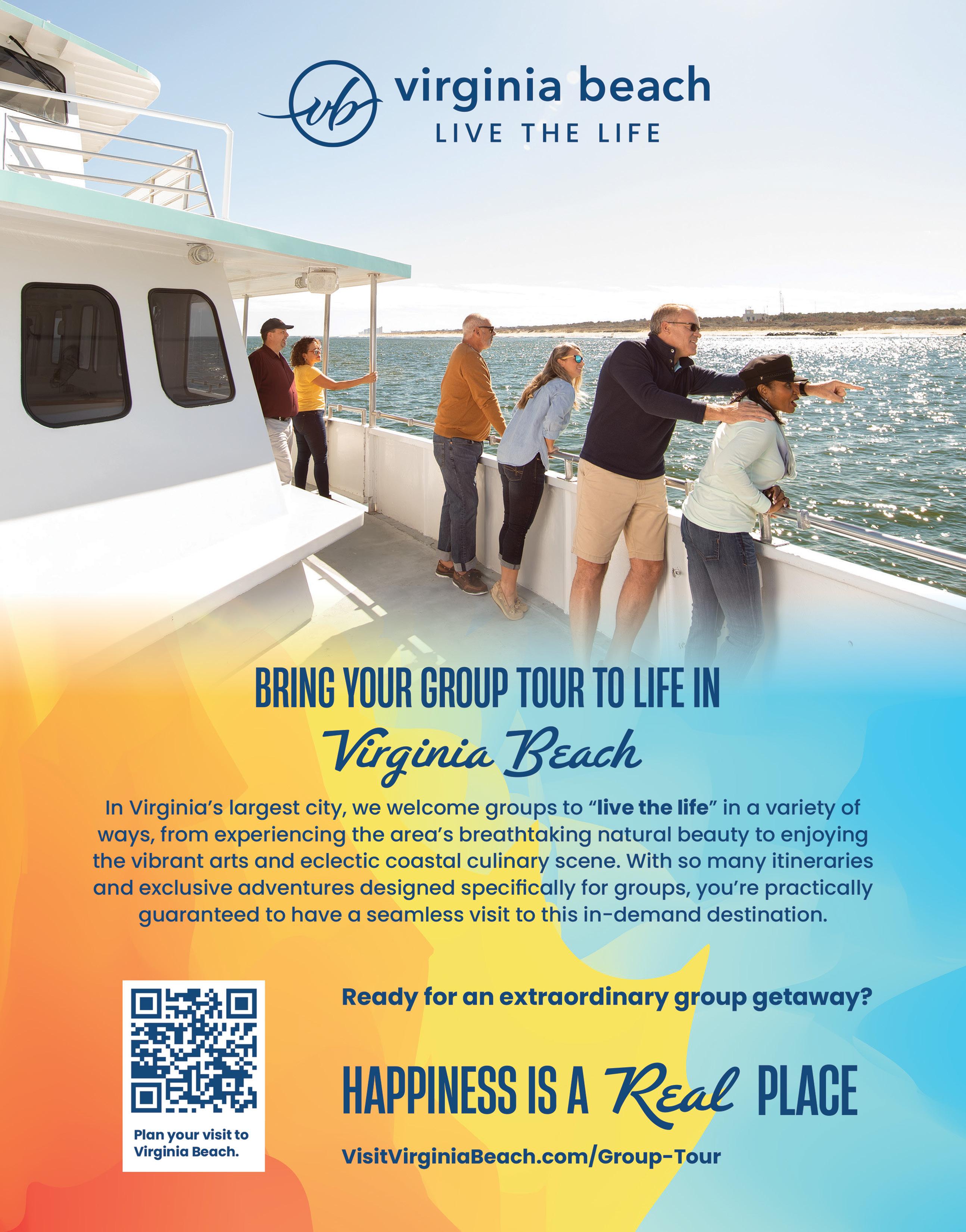


wWhen it comes to educational travel, Virginia is hard to beat for its range of attractions and activities. Whether students are interested in history, branches of the military, STEAM subjects, or performance and other arts, there’s plenty to see and do. And, opportunities to have fun, too. Plus, its proximity to Washington, DC adds another dimension that could be included to any teacher’s itinerary. From the first permanent English settlement centuries ago to the advances in science and technology today, Virginia spans time and topics to provide students with a well-rounded experience. Here, we’ve collected some ideas for organizers.
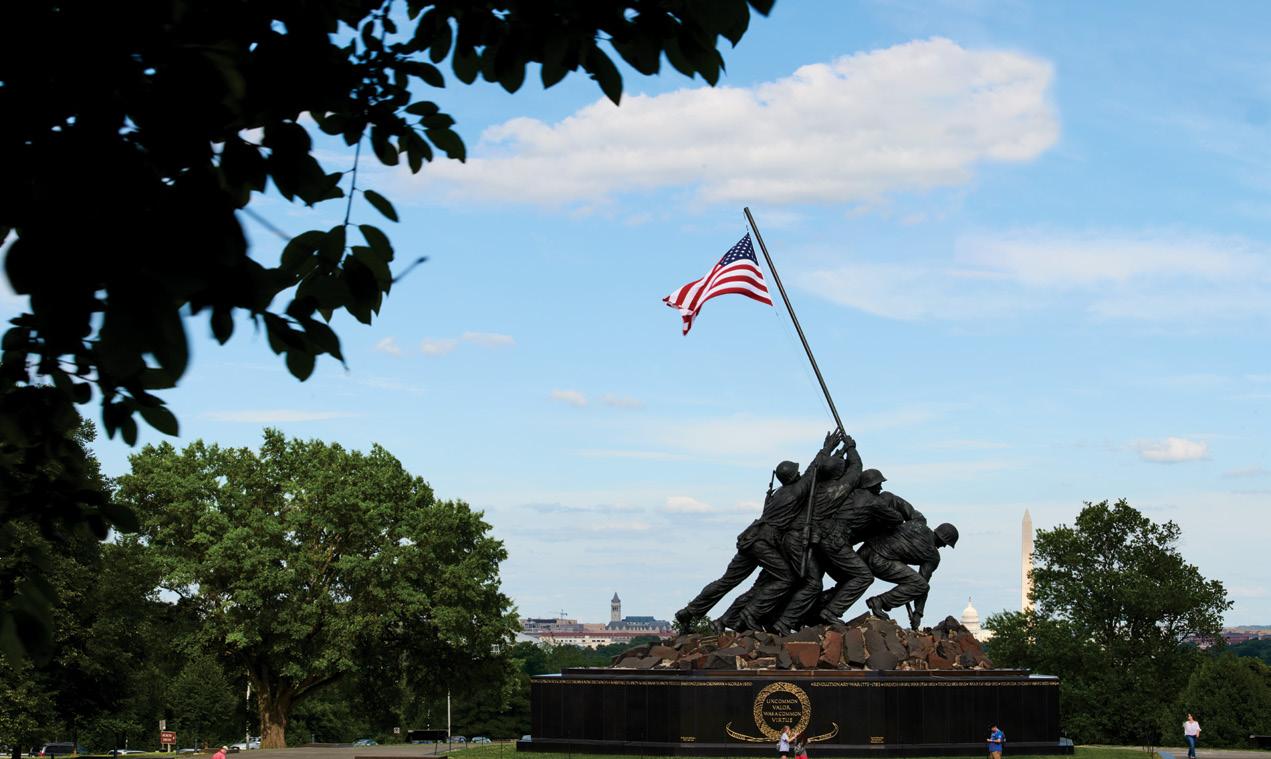
Arlington, in Northern Virginia and just a stone’s throw from DC, is home to a number of sights. Arlington National Cemetery is one of many important destinations, and visiting the Tomb of the Unknown Soldier and witnessing the Changing of the Guard ceremony are both musts while there, as is a stop at The Military Women’s Memorial. Nearby is The Drug Enforcement Administration (DEA) Museum and the U.S. Marine Corps War Memorial (Iwo Jima), both of which are noteworthy as well.
For a completely different perspective, make time to tour the Museum of Contemporary Art Arlington (MoCA), which offers a robust field trip program that caters to K-12 student groups. There’s also MoCA’s Innovation Studio + Store at Amazon’s HQ2 Met Park.
After time immersed in history, culture, and arts, take a breather with some amusement, whether it’s at 5 Wits Arlington adventure experiences, Climb UPton ropes course, BOWLERO bowling alley, arcade, and restaurant, or Immersive Gamebox, a hands-on, critical thinking adventure.
Not far from Arlington and worth a side trip is Senator John Warner Maritime Heritage Center, Home Port of Tall Ship Providence. A floating classroom, it features STEM workshops such as Navigation, Knot Tying, and Mechanical Advantage.
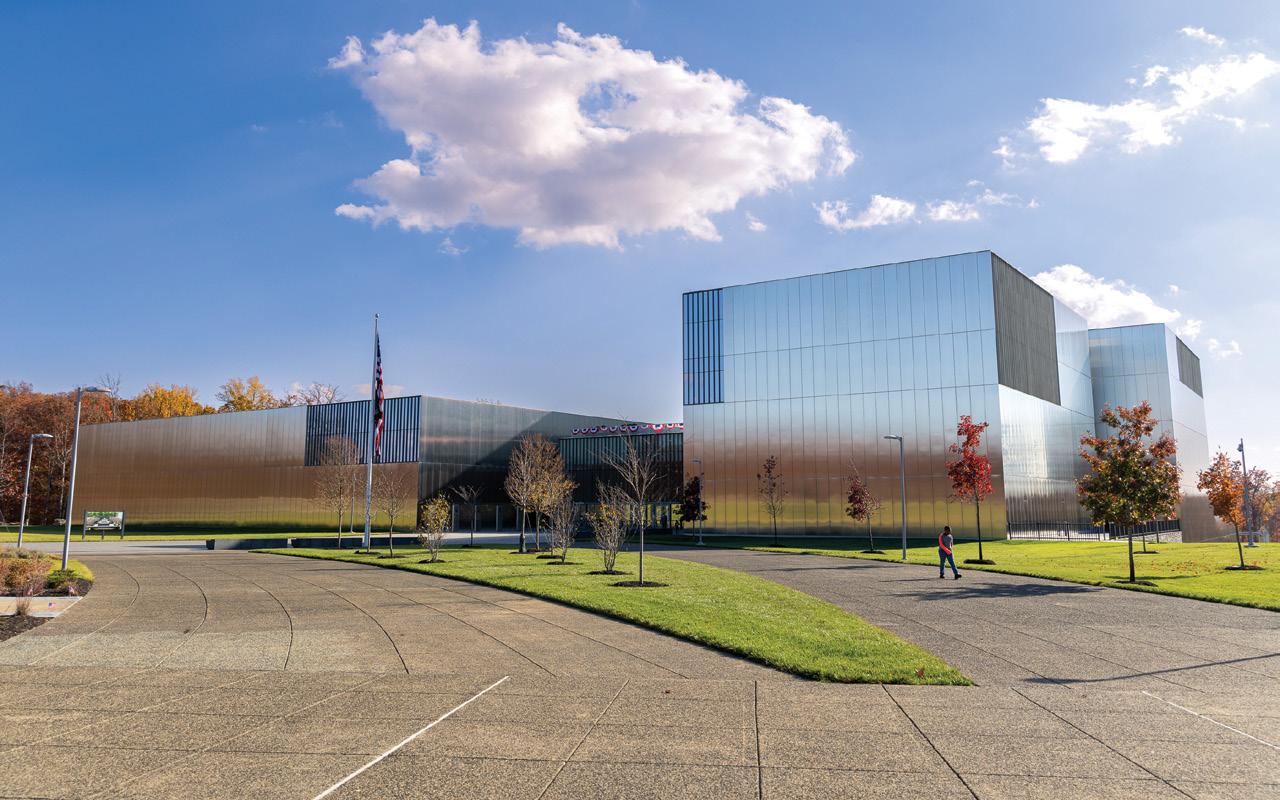
BY ALLISON KAY BANNISTER
Fairfax, about a half hour drive from Arlington, is another Virginia city teeming with historical and educational sites. The iconic Mount Vernon, home of George Washington, is considered a must visit for student groups. In addition to its history lessons, it’s also motorcoach friendly and has a food court. George Mason University, one of the top research universities in the U.S., should be considered as well, for its STEM career-focused programs, campus tours, lab visits, and more.
Smithsonian’s National Air and Space Museum Steven F. Udvar-Hazy Center is also a top stop, with artifacts, aircrafts, and spacecrafts on display, including the Space Shuttle Discovery and the Lockheed SR-71 Blackbird. It’s very accommodating to motorcoach parking, has on-site food and an IMAX theater, and offers free admission.
Don’t leave Fairfax without visiting the National Museum of the United States Army, which houses Army history exhibits, galleries, a multisensory theater, and an Experiential Learning Center that is a popular group option. Museum admission is free, but reserving timed tickets in advance is recommended. There’s also a café on site and performance space available.
Keeping with the military theme, travel to the National Museum of Marine Corps, in Triangle, Virginia, roughly an hour south of Fairfax. A tribute to past, present, and future U.S. Marines, it has cutting-edge interactive exhibits and irreplaceable artifacts, plus the Marine Corps Combat Art Gallery, an indoor, laser-simulated rifle range, and the Medal of Honor Theater, which plays their signature film, “We, the Marines.” Admission is free, there’s ample motorcoach parking, and bagged meals are available on request.
Taking a turn toward the coastal side of Virginia, where the Chesapeake Bay and Atlantic Ocean meet, is Virginia Beach. There, students can explore Virginia Aquarium & Marine Science Museum, with its 800,000-plus gallons of aquariums, hands-on exhibits, and a marshland nature path. Depending of the timing of the trip, organizers could add a Dolphin Watching Boat Tour in spring, summer, or fall, or a Whale Watching Tour in winter.
Next head to Cape Henry Lighthouse, the first federally funded lighthouse and first public works project in the US. And, just a short walk from there is First Landing Cross, which marks the spot where English settlers landed in 1607. This landmark is within First Landing State Park, which offers a structured educational environment with STEM/STEAM-focused programs.
Drive about a half hour south to the not-to-bemissed Military Aviation Museum, which houses the largest private collection of flyable WWI and WWII aircraft in the world and recognizes those who built, flew, and maintained these military aircraft. There are STEM/STEAM programs, meal options, and performance space available at the museum, and for an added fee, a flight demonstration can be arranged. When everyone is ready for some leisure time, check out Atlantic Fun Park, Motorworld, Adventure Park, APEX Entertainment, or Dave & Busters—all in the vicinity.


Now, time for some culture! A short distance from Virginia Beach is the city of Norfolk, and the acclaimed Virginia Arts Festival. In addition to year round events such as concerts, traveling exhibits, and performances throughout the city, their programming comes alive for students annually in spring, with its major draw: Virginia International Tattoo.
The same weekend this celebration of patriotism and international goodwill is held, the Virginia International Music Festival takes place, in partnerships with Performing Arts Consultants. There are competitions for bands, choirs, and orchestras, options for student participation in other activities, an awards ceremony, and more. Virginia Arts Festival staff are happy to assist student groups with performance opportunities and other educational experiences.
While in the area, a visit to Norfolk Botanical Gardens is in order, as is a side trip to the city of Newport News to explore the Virginia Living Museum, which has a soon-to-be opening Wild Care Center and student tour programs. The Living Museum also serves as a performance venue.
One last thing for trip planners to consider is the upcoming 250-year anniversary of the American independence in 2026, with spotlights on the American Revolution and the Revolutionary War. This momentous occasion is being commemorated by The Virginia American Revolution 250 Commission (VA250). Special exhibits and events that showcase Virginia’s defining role in the creation of our Nation begin as early as 2024 and span the entire state.



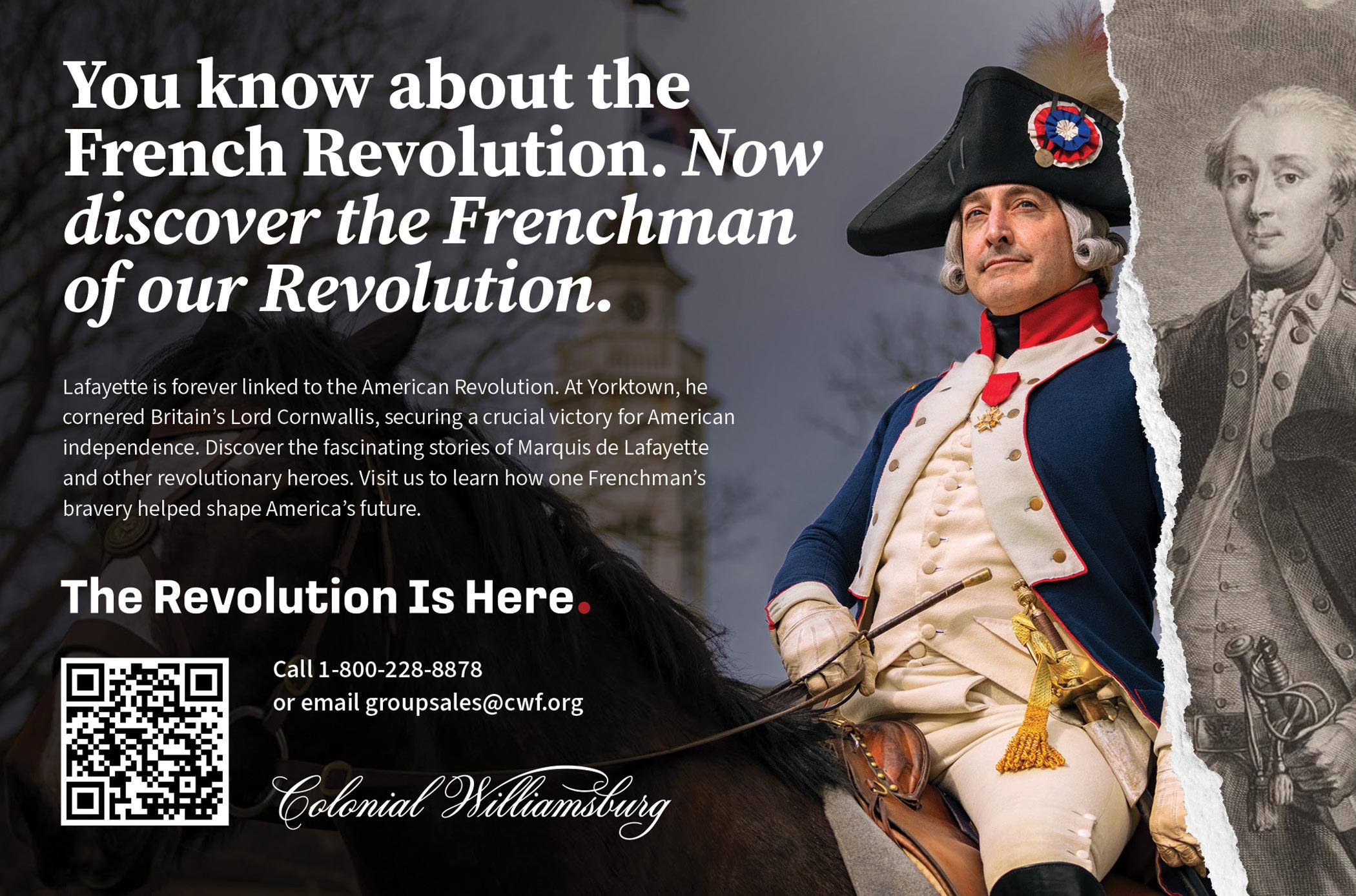
nNo passport, no currency exchange, no problem! As a student travel destination, Puerto Rico offers a worldview-enhancing mix of Taíno, Spanish, African, and American cultures, along with a wealth of history, natural beauty, entertainment, recreation, and cuisine—all while remaining in U.S. territory.

Both English and Spanish are spoken, providing a comfortable communication level, regardless of language proficiency. Mobile phones and data plans are also supported, allowing students and educators to enjoy a faraway adventure while staying connected with friends and family back home.
Puerto Rico is an archipelago in the Caribbean Sea, about 1,000 miles southeast of Miami. It’s easily accessible with direct flights from many major U.S. cities, making it a convenient choice for student travel, while also offering countless opportunities to learn, explore, and immerse!
One of the island’s greatest features is its vivid culture, blending traditions, art, music, festivals, and cuisine. Just two years ago, Puerto Rico celebrated the 500th anniversary of the founding of Old San Juan, the oldest city in the U.S. The art scene here is as colorful as it is diverse, ranging from street murals to museums and galleries, including the Museum of Art of Puerto Rico and Puerto Rico Contemporary Art Museum Additional art can be found in Ponce and Bayamón, including unique souvenirs to bring home.
Important historical landmarks should be on your itinerary, such as Castillo San Felipe del Morro, an impressive fortification and former military outpost with a storied background, and Caguana Indigenous Ceremonial Site, a Taíno-culture archaeological ground within the Central Mountain Range that dates back about 800 years. A stop in Loíza, showcasing Puerto Rico’s African heritage, is recommended. Home to María de la Cruz Cave Historic Park, an archaeological site discovered in 1948, it offers cave tours and displays ancient Taíno artifacts. Calle Fortaleza in Old San Juan, a dynamic cobblestone street filled with artisan shops, restaurants, and other attractions, is also worth a stroll.
In addition to its culture, Puerto Rico features a varied landscape, from sweeping beaches to towering mountain ranges to lush rainforests and complex ecosystems. Student groups can enjoy the abundance of sand and sun Puerto Rico offers while exploring the island as an extension of
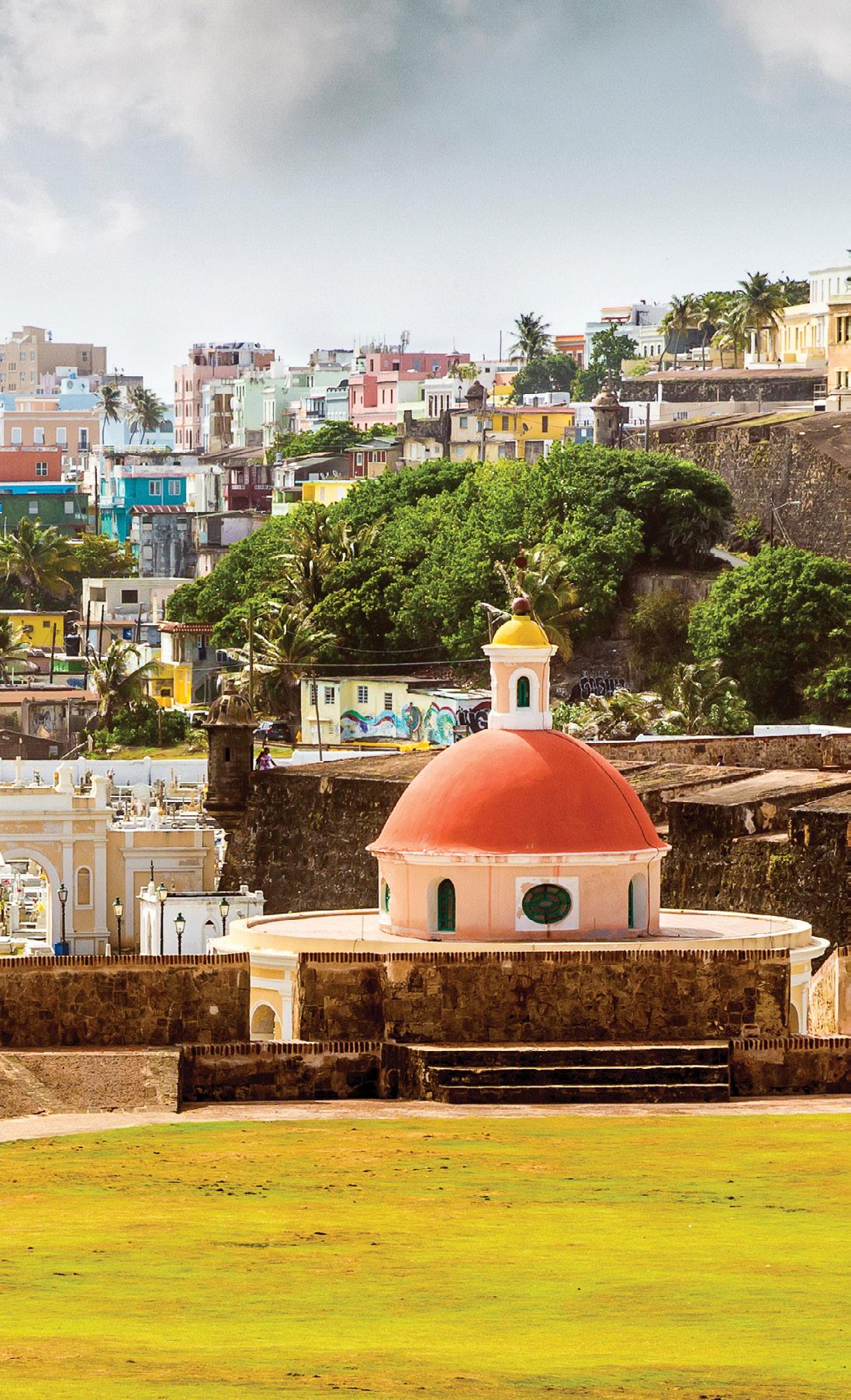
the classroom. They can marvel at the wonder of bioluminescent bays, a rare phenomenon that produces a glow-in-the-dark effect under certain conditions. There are only five of these in the world, and three are in Puerto Rico. Or, trek through El Yunque National Forest and discover hundreds of plant and animal species, including the tiny-but-vocal coquí frog.
Puerto Rico’s many caves, particularly Cueva Ventana, Cañon de Tanamá, and Río Camuy Cave Park, offer activities such as spelunking, rock climbing, rappelling, rafting, tubing, and hiking. There are also the Pink Salt Flats of Cabo Rojo, known for its distinctively reddish waters created by a high concentration of salt. This is a must-see destination for student groups on the way to Los Morrillos Lighthouse or Playuela Beach.
Tours are another option, whether on foot, on the water, or through the air. Take a guided walking tour of Ponce; kayak through the bioluminescent
bays of Fajardo, Vieques, or Lajas; go snorkeling in Culebra or paddleboarding in Aguadilla; cruise the Arecibo River or sail a catamaran through Isla Palomino; or go ziplining in Toro Verde Nature Adventure Park.
For a unique experience, visit the Guanica Dry Forest, a UNESCO Biosphere Reserve. This forest offers a stark contrast to the lush rainforests, featuring arid landscapes, diverse wildlife, and scenic trails perfect for hiking and birdwatching.
And for those interested in astronomy, the Arecibo Observatory, once home to one of the largest radio telescopes in the world, offers educational tours and exhibits. While the main dish collapsed in 2020, the site remains a fascinating place to learn about the universe.
As for food, the flavors of Puerto Rico can be found on just about every corner, and one of the great ways to get a taste of the cuisine is through a food tour, such as those offered by Spoon and Flavors of San Juan. These tours delve into gastronomy, history, and architecture, making stops at popular eateries. Student groups could also stop at Lote 23, a food truck park, and sample local favorites from its many kiosks. Staple dishes such as mofongo, tostones, and lechon are just a few of the Afro-Caribbean delicacies that must be tried.
Finally, there’s DISTRITO T-Mobile, a relatively new entertainment complex offering everything from movies to music to indoor recreation to concerts and shows, plus dining, games, and more. This innovative, illuminated space is located in the heart of San Juan and designed to spotlight the best of Puerto Rican culture and talent.
However you and your students experience Puerto Rico, it will leave you with broadened horizons and lasting memories.







BY JOSH VEAL

nNestled in the heart of Central America, Costa Rica is a treasure trove of culture, nature, and history. Renowned as one of the happiest nations globally, Costa Ricans are eager to welcome, collaborate with, and educate your students.
Though it may be just a gulf away from the U.S., many are unaware of the coastal country’s abundant offerings. Your student group could easily spend weeks immersed in the lush landscapes and vibrant culture of Costa Rica.
The journey begins in San Jose, the bustling capital and largest city of Costa Rica. Most student groups spend their initial nights here after arriving at Juan Santamaría International Airport. Being
the capital, San Jose is home to all kinds of Costa Rican culture, from the immense central market filled with local people selling local food and authentic souvenirs, to the absolutely gorgeous National Theater, an important piece of cultural heritage that opened in 1897 and was funded largely by a coffee tax.
The city is also home to the Pre-Columbian Gold Museum , a subterranean museum filled with over 3,500 artifacts from before Columbus arrived. Animal figures, amulets, earrings, dioramas, a life-sized gold warrior— this place has it all. Similarly, the Jade Museum is an archeological haven, boasting the world’s largest collection of American jade, with 7,000 finely crafted pieces spanning five floors of exhibits.

On the outskirts, student groups can visit the chocolate region of Costa Rica, delving into the rich history of one of humanity’s favorite foods, tracing its origins back to Mayan and Aztec cultures.
Next, head to the Arenal Volcano area in La Fortuna, in the northwest of the country. Arenal is one of the few volcanos in the world with a perfect conical shape and is relatively young at less than 7,500 years old. Visitors can hike the surrounding trails, observe lava remains, and enjoy the diverse flora and fauna. You can travel paths all around the mountains, observing the remains of lava tracts along with endless flora and fauna.
The area’s natural beauty offers picturesque spots like Arenal Lake, ideal for watersports or crossing over to Monteverde—Costa Rica’s equivalent of the Pacific Northwest. Nearby, the 70-meter La Fortuna waterfall plunges into a greenish-blue swimming hole in a lush tropical forest, while Caño Negro provides a stunning natural refuge and important wetland perfect for bird enthusiasts.

Speaking of Monteverde, this city in the mountains is part of the Costa Rican cloud forest, the home of many environmental conservation efforts and a “natural laboratory.” With over 1,000 species of fauna and 2,500 species of flora, the Monteverde Biological Reserve is an impressive ecosystem welcoming to those seeking education, culture, and adventure. In this rural area, visitors can immerse themselves in nature and connect with locals, learning about their way of life.

Back to the Central Pacific region of Costa Rica, we head to Manuel Antonia, a small coastal village surrounded by picturesque rural towns. The Manuel Antonio National Park , one of the most significant and popular protected areas in Costa Rica, is home to diverse wildlife, including sloths, monkeys, iguanas, and deer. Students can explore not just with hiking but with horseback riding, rafting, kayaking and snorkeling. Visit in fall to spot whales and dolphins! This park is also home to the grey-crowned Central American squirrel monkey, which exists only on the Pacific coast of Costa Rica.
For those seeking a beach paradise, Guanacaste Province on the Pacific coast offers some of Costa Rica’s best beaches. Tamarindo Beach is renowned for its surfing opportunities, vibrant nightlife, and stunning sunsets. Playa Conchal , known for its white sand made up of millions of crushed shells, is perfect for snorkeling and swimming in the crystal-clear waters.
Over on the Caribbean side, you’ll find the enchanting Tortuguero Canals. This beautiful river region attracts a variety of flora and fauna, particularly sea turtles, giving the area its name—derived from “tortuga,” meaning turtle. Known as the “Amazon of Costa Rica,” Tortuguero’s intricate network of canals, beaches, and lush forests is a top destination in the country.
Additionally, the Osa Peninsula, located in the southern part of Costa Rica, is home to the Corcovado National Park. This remote and biodiverse region is often referred to as “the most biologically intense place on Earth” by National Geographic. Students can hike through dense rainforests, spot rare wildlife, and experience untouched natural beauty.





















BY JULIE BECK

tThis past summer, there were lots of conversations about overtourism. According to the Oxford Dictionary, overtourism is, “The situation where a place of interest is visited by too many tourists. In many places, overtourism is provoking a backlash from the locals.” Overtourism impacts the quality of life in the area for the locals, but also the quality of the experience for visitors.
In Barcelona, Spain, the locals were so upset about the overabundance of tourists that they protested by throwing items and spraying the visitors with squirt guns. They also shouted, “Go home!” The Barcelona citizens expressed their frustration and anger toward the government as well. The locals recognize the economic benefit of the tourists; however, they strongly believe that Barcelona has reached its tourism capacity and that city officials need to take action.
At one point, Venice’s overabundance of cruise ships was not only impacting the structure and environment integrity of the city, but also the large crowds walking through the narrow streets of Venice. City officials listened to their citizens and made the cruise ships dock further away from the Grand Canal and implemented a 5 Euro visitation fee for each visitor. The fee has brought in additional funding for Venice, but has not fully fixed the issue.
Due to a drought, water is a shortage for residents of Sicily. In the summer
of 2024, tourists were discouraged from visiting Sicily, as the hotels did not have enough water to provide. The locals were forced to cut water consumption by as much as 45 percent and understandably did not want to give up their access to water to tourists.
Each year, 20 million tourists visit Amsterdam, Netherlands, and they have saturated the city. Amsterdam’s marketing strategy as a tourist destination has led to their own demise. Amsterdam residents believe that the excessive number of tourists is unsustainable and is stretching hospitality to its limits.
What are some of the negatives about overtourism? First and foremost, housing, Rental and home prices have risen. Finding affordable housing is challenging, Plus, what were once long-term rental places have become Airbnb or other short-term rental places. The influx of tourists in European cities has resulted in the building of new hotels. Serene neighborhoods have become crowded with hotels and restaurants, and the atmosphere has changed. Some residents feel like they live in a theme park and not the place they moved to because of its environment or historical background. One Amsterdam resident stated, “The streets feel less lived in because we only see tourists and not our neighbors.” Finally, the influx of tourists has resulted in poor behavior. This includes urinating in
the streets, defacing historic relics, taking risks to getting the perfect selfie, and causing more crime.
UNESCO Peter Debrine stated. “Protests and citizen’s dislike for overtourism will spread if Europe officials fail to address the mass tourism’s negative effect on the lives of residents. It is turning into a very volatile situation.”
As an educator who leads student trips, what can you do to make sure your group are good stewards while traveling and do not have a negative overtourism impact?
First and foremost, think about your destination. Does it already face overtourism? If yes, should you select another place to visit? If you still choose to visit a popular destination, follow the advice of some European countries’ response to overtourism: The Italy manifesto emphasizes responsible tourism, economic, social and environmental contributions to local life and the promotion of sustainable practices.
According to the Living in Italy magazine, the key points of the tourism manifesto are: (1) transform tourism for good, (2) use responsible tourism, (3) support local businesses, (4) encourage slow immersive tourism, (5) support local causes, (6) collaborate and network, and (7) focus on sustainable travel.
Amsterdam’s marketing strategy has changed from destination marketing
to destination management. Their advice includes: (1) avoid traveling during the peak tourist months of July and August, (2) be more engaged with the city’s residents, (3) travel in a thoughtful, responsible way, (4) don’t focus only on the checklist of must see attractions, (5) avoid shops and
Alabama Tourism Department 13 www.alabama.travel
Band Room Orlando 35 www.bandroomorlando.com
Bob Rogers Travel C4 www.bobrogerstravel.com
Branson Convention & Visitors Bureau 7 www.explorebranson.com
Broadway in Chicago 9 www.broadwayinchicago.com
Chick-fil-A College Football Hall of Fame 5 www.cfbhall.com
Colonial Williamsburg Foundation 27 www.colonialwilliamsburg.com
Destination Gettysburg 21 www.destinationgettysburg.com
Disney Theatrical 3 www.disneytheatricalsales.com
Empire State Building Observatory 35 www.esbnyc.com
G raceland/Elvis Presley Enterprises 37 www.graceland.com
Group Sales Box Office at Broadway.com C2 www.broadway.com/groups
Huntsville/Madison County CVB 22 www.educationalescapes.com
Landry’s Inc. 21 www.landrysinc.com
Marine Corps Heritage Foundation 39 www.usmcmuseum.com/education.html
Mirvish Productions 21 www.mirvish.com
New York City Ballet 30 www.nycballet.com
New York Philharmonic 34 www.nyphil.org
PhotoVision, Inc. 10 www.grouptravelvideos.com
services dedicated solely to tourists, but shop locally instead, (6) travel in a small group led by a local guide.
Traveling can be a wonderful way to learn and experience a destination, but travel responsibly. By doing so, your group and the residents of the cities alike will be richly rewarded.

Pigeon Forge Department of Tourism 39 www.pigeonforgetours.com
Ron Jon Surf Shop 34 www.ronjonsurfshop.com
Salem Witch Museum 30 www.salemwitchmuseum.com
Sevierville Contention & Visitors Bureau/Chamber of Commerce 31 www.visitsevierville.com
Shear Madness 30 www.shearmadness.com
Shores & Islands Ohio 22 www.shoresandislands.com
Skydeck 14 www.theskydeck.com
Sound Education Programs 11 www.soundep.com
The Billy Graham Library 19 www.billygrahamlibrary.org
The Metropolitan Opera 14 www.metopera.org
Toby’s Dinner Theatre 30 www.tobysdinnertheatre.com
Top of the Rock Observation Deck 27 www.topoftherocknyc.com
Travel With Barb 4 www.travelwithbarb.com
Virginia Arts Festival 26 www.vafest.org
Virginia Beach CVB 23 www.visitvirginiabeach.com/grouptour
Visit Mobile 15 www.mobile.org
Visit Montgomery County 10 www.visitmontgomery.com
World of Coca-Cola Museum C3 www.cokeurl.com/SchoolTrips

BY JOSH VEAL
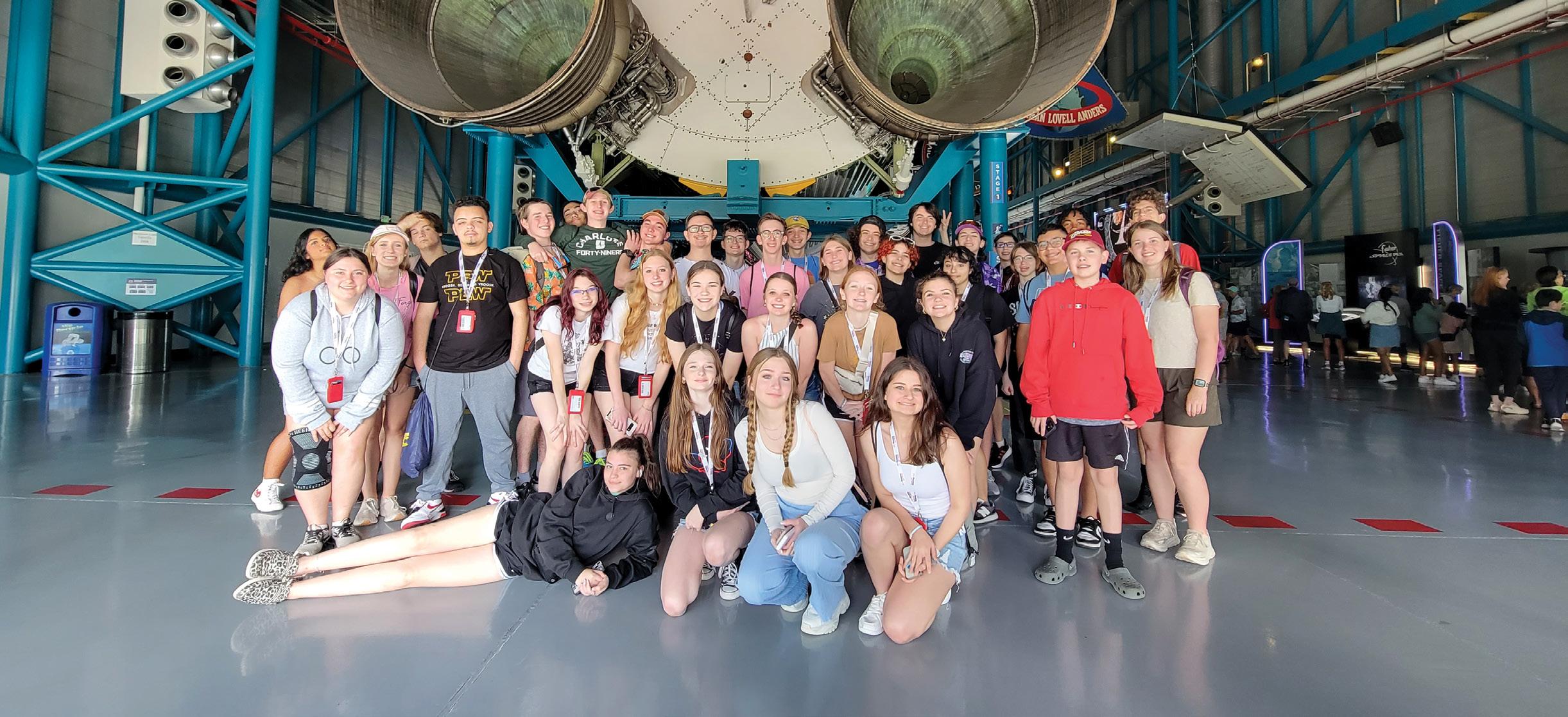
As band director at Marvin Ridge Schools in Waxhaw, North Carolina, Emmanuel Ross is always trying to find ways to widen students’ perspective. He believes young adults need experiences to be able to make the best decisions for their future and have the best education possible, and travel is of course a large part of that. Recently, that involved a visit to Orlando and having unforgettable days at Universal Orlando Resort and Kennedy Space Center, all with the help of SYTA tour operators Super Holiday Tours.
We asked Ross to tell us what he sees students gaining from these experiences.
TELL US ALL ABOUT YOUR RECENT TRIP TO ORLANDO.
We’ve gone the last two years, and they have both been very different trips, but very amazing. This most recent one, we went to Universal Studios for a couple days, and the kids were able to participate in a Sound Design workshop, which allows them to go behind the scene, play music and really figure out the process to add sound to movies. Because people don’t necessarily think about the work that goes into film, especially cartoons, if you see it on screen, it has to be put in after the fact. So, they got to work on that and gain that perspective. It was really, really awesome.
Also, we were able to go to spend time at NASA’s Kennedy Space Center, which was really cool because it was actually the same day as the eclipse, and that was not planned. It was a happy accident. They were able
to learn about the Eclipse and space in general during a major event. There was actually a rocket launch that week too. So, we were able to watch a rocket launch the day before from a roller coaster, and then the next day, go to NASA. It was a wild trip. Everybody loved it.
WHAT VALUE DID THAT UNIVERSAL WORKSHOP PROVIDE YOUR STUDENTS?
We always talk about 21st century skills are getting kids career and college ready. And you talk about doctors and lawyers, but did you know you could become a foley artist? Did you know that that job even existed? Or, did you know that there are people who are working the same sound machines you’re working during this marching band show? I mean, the technology’s a little bit more advanced, but it’s the same skills that you’re using right
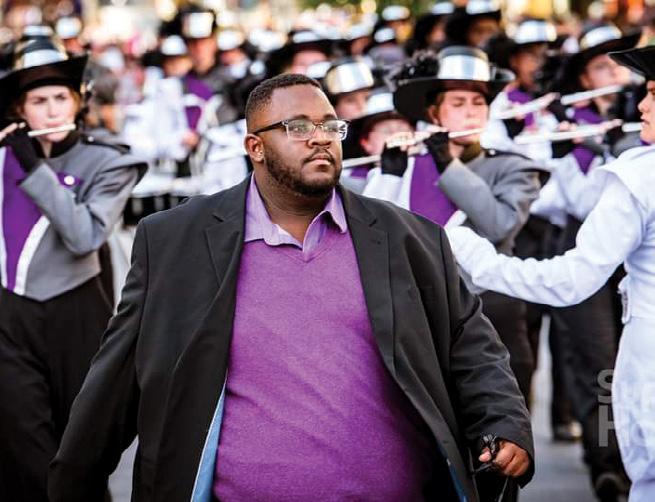
now in marching band. You can be a sound editor for Universal Studios, or for Disney. These are transferable skills that you’re doing right now, jobs you didn’t even know existed.
HOW DOES WORKING WITH SUPER HOLIDAY HELP YOU OUT?
They’re setting up this trip for you. They are calling places, booking tickets, booking hotels, setting up special experiences. Our operator Mark Drury set us up on a beach barbecue in a location I would have never known outside of Kennedy Space Center, because he has the expertise and knows local vendors. I would have never known to go to this area of Cocoa Beach and call this barbecue company to do this. It also really is about ease of mind and student safety. Super Holiday has been so good in making sure we’re taken care of, making sure that our students are safe and our trips are stress free.



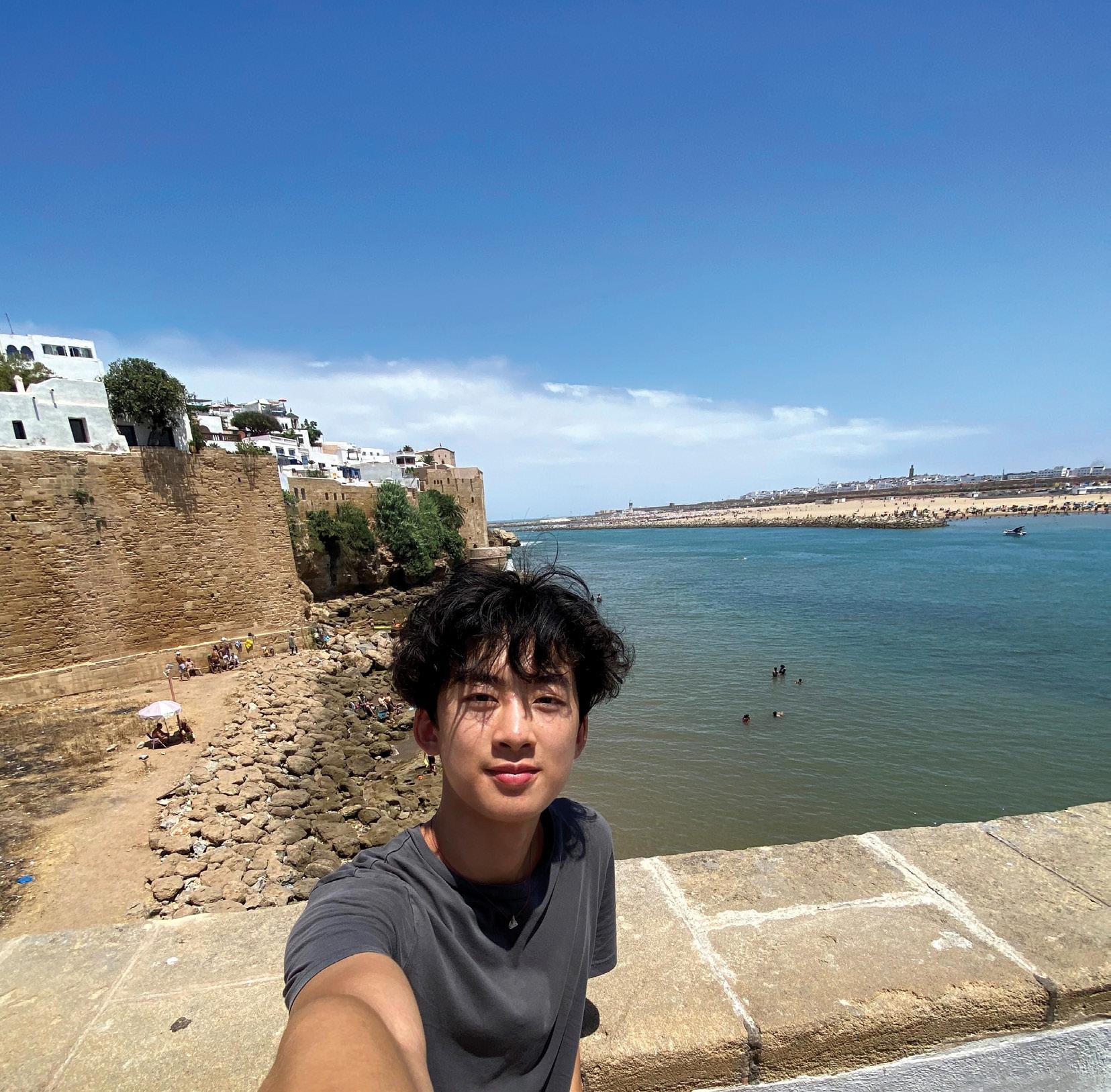
i“It’s hard for many of us to survive,” our guide says quietly, a grave look darkening her initial easy smile. High up in the quiet, sun-dappled hills of the Tilarán mountains in northern Costa Rica, we gathered around young, green coffee trees. An earthy aroma of freshly ground coffee wafted alongside the breeze. Since arriving in Costa Rica, my family and I have been enchanted, impressed, and awestruck by the overflowing nature, cultural beauty, and laid-back, “pura vida’’ lifestyle of the locals.
Immersing myself in the majestic waterfalls and lush rainforests, the diverse food scene, and the unrivaled warmth and friendliness of Costa Ricans has captivated me. Costa Rica had felt like a utopian paradise – a country free of violence, struggle, and instability, with no standing army
since 1949. I used to think that “pura vida” was just a phrase plastered on tacky rainforest postcards, but now, I truly understand, experience, and have even embraced the natural, relaxed, and inexplicably simple approach to life of Costa Ricans.
But my focus shifted as our guide at the coffee plantation continued. “Picking coffee beans every day is exhausting. We barely make enough money,” she says softly. It was then that I realized that the picturesque, picture-perfect image of Costa Rica often overshadowed the stories of those who worked laboriously to create that image.
After the coffee tour, it hit me powerfully that, as with anywhere, with progress comes its sacrifices. Costa Rica: a pioneer in sustainability, yet affected by unlivable wages; home to rich and sweet Arabica coffee, yet requiring long and grueling hours of
BY VINCENT SHEN
coffee-picking; a touristic painting of paradise, but a less idealistic reality for everyday Costa Ricans. I deeply admired the unparalleled beauty and uniqueness of Costa Rica and its people, but at the same time, I resonated with the powerful, authentic narratives of the ordinary coffee pickers who worked from dawn to dusk, serving as the backbone of the nation’s economy and culture.
My time in Costa Rica was transformative, cultivating in me an appreciation and desire to seek out the rich, day-to-day stories of those leading vastly different lives than me. It made me value the preciousness of humanity, celebrating and cherishing the individual stories that make the nation of Costa Rica whole. Local shopkeepers greeting me with the warmth of my favorite aunt, taxi drivers sharing stories about their colorful childhoods like we were old friends, and my fellow spectators smiling and laughing with me during Carnaval have deepened my love and admiration for the lives of everyday ticos – Costa Ricans.
Even more than the breathtaking sights and incredible culture of Costa Rica, the everyday stories that serve as the foundation for this remarkably beautiful nation will forever resonate with me. When I travel, I hope to learn, amplify, and preserve the unique individual stories that give the world its beauty, color, and spice, fostering deeper, more human connections across different cultures. Inspired by my warm, cheerful coffee guide in Monteverde, Costa Rica, thousands of miles away, I am committed to documenting the stories of the world, starting within my own community.

